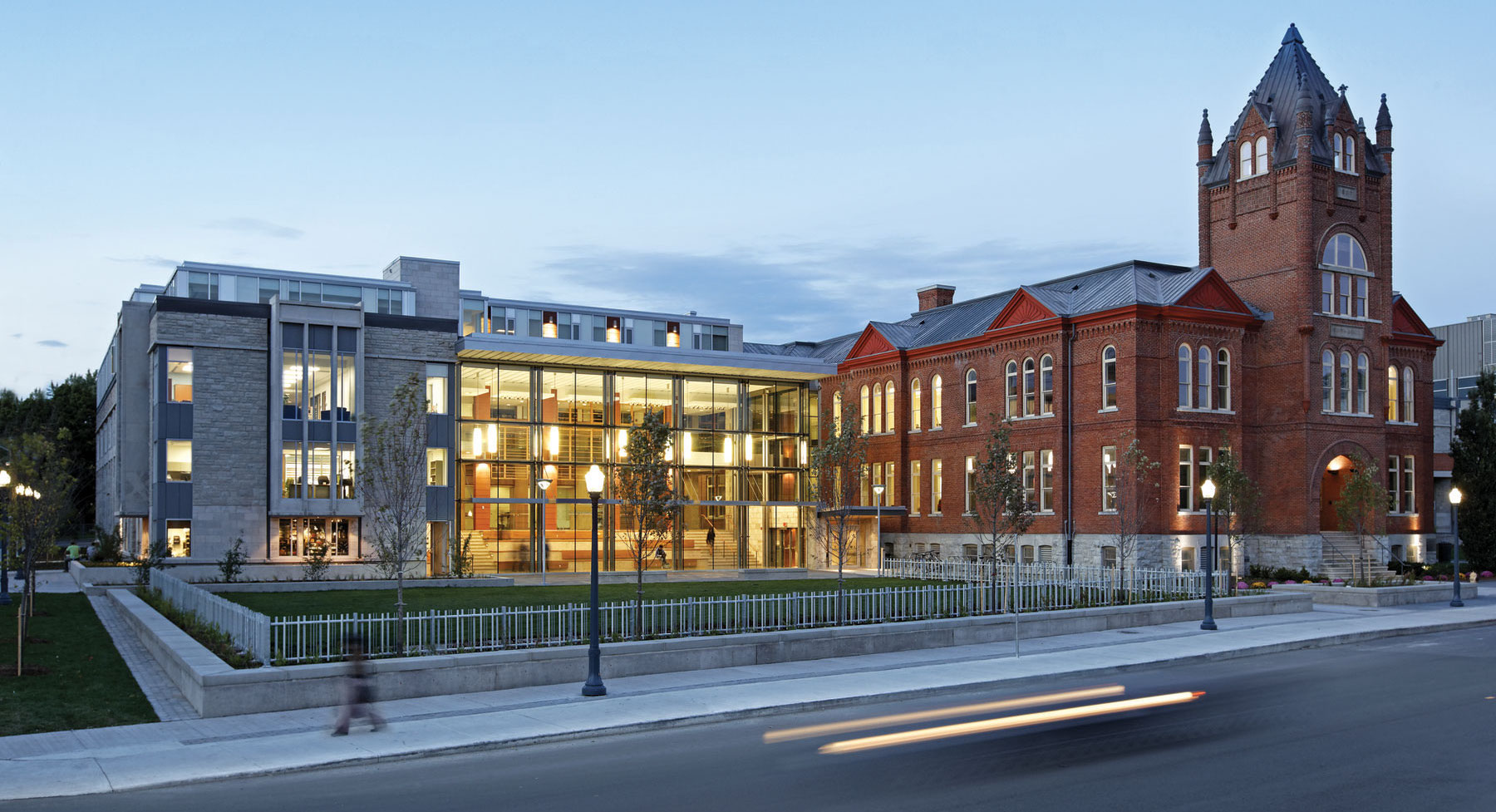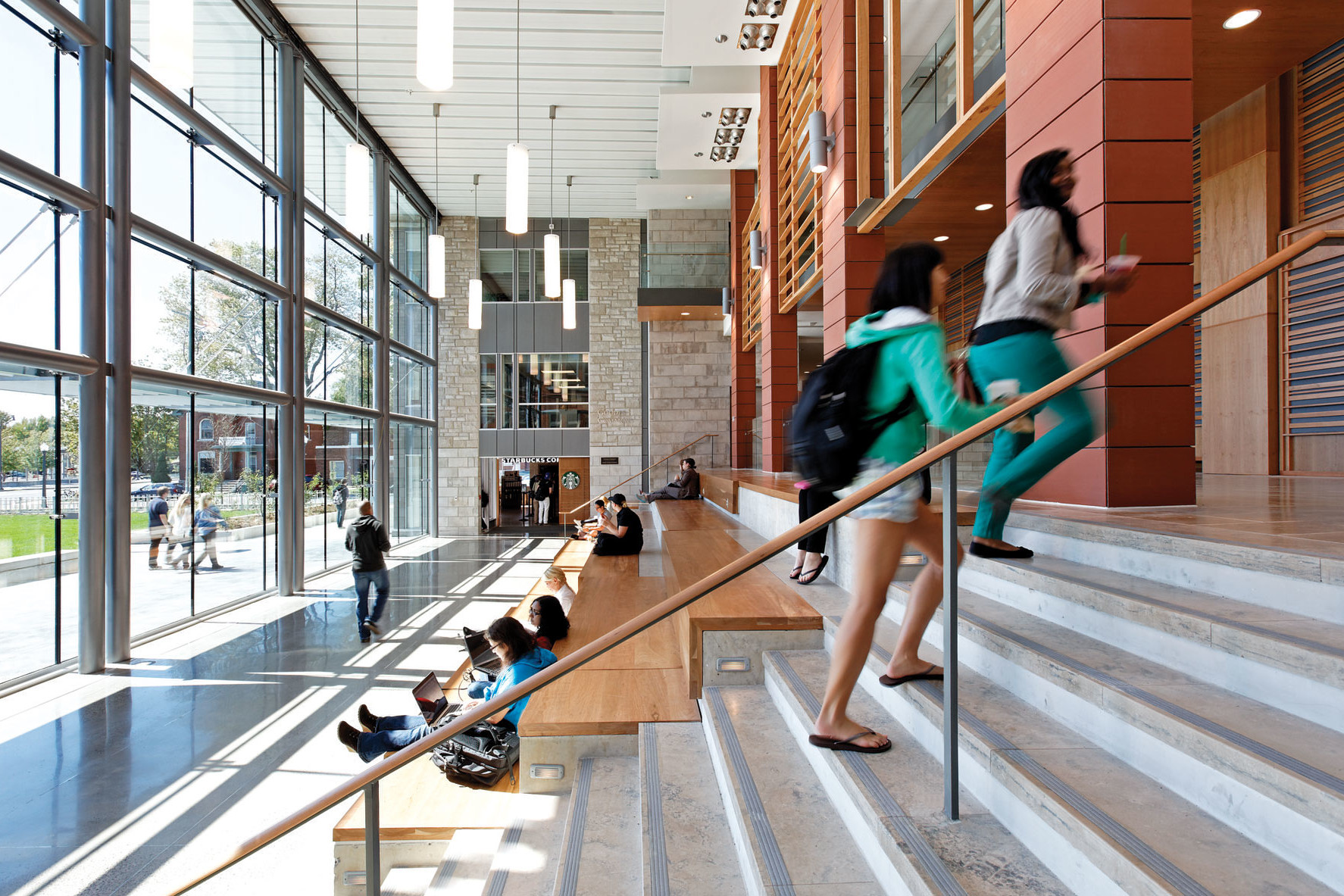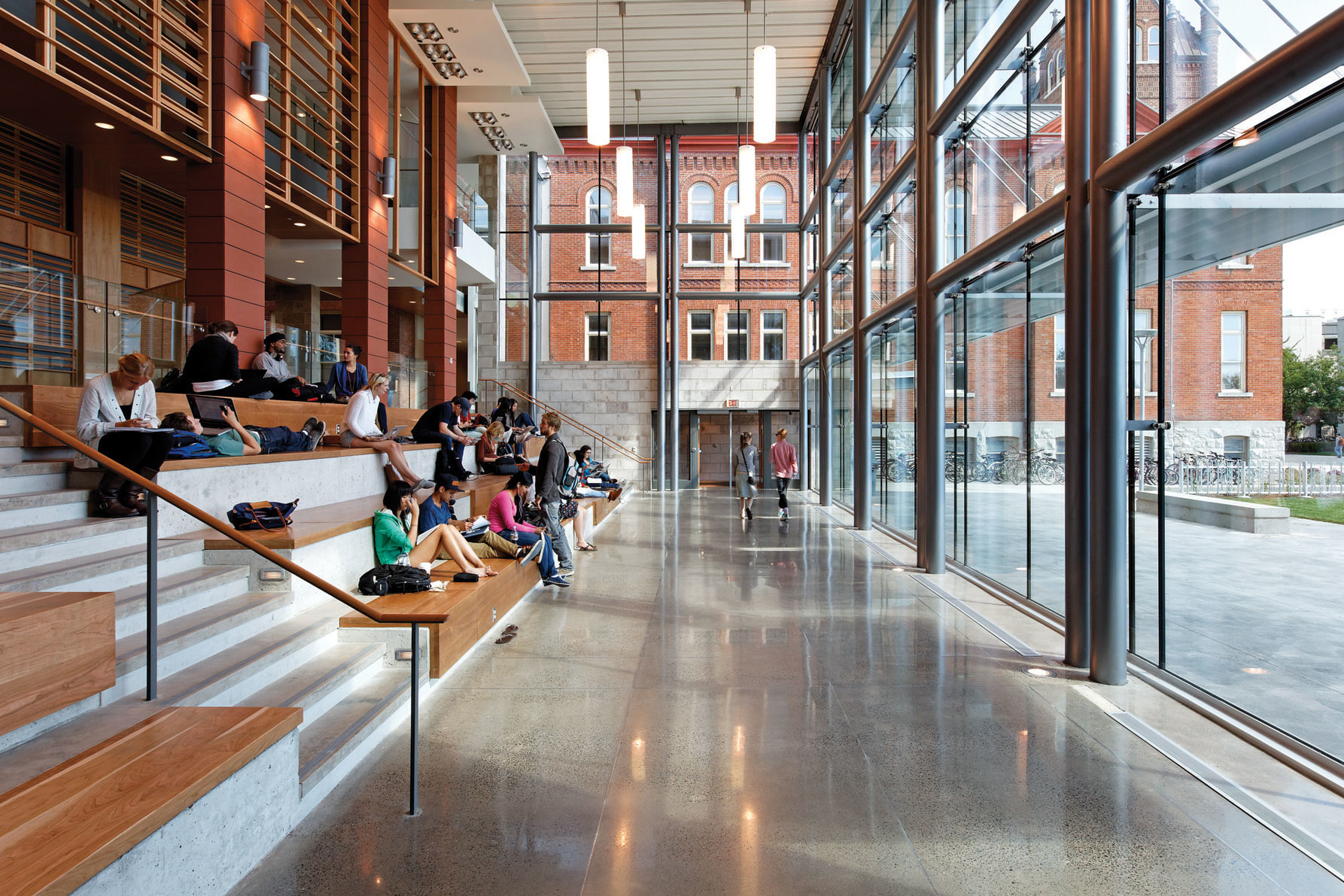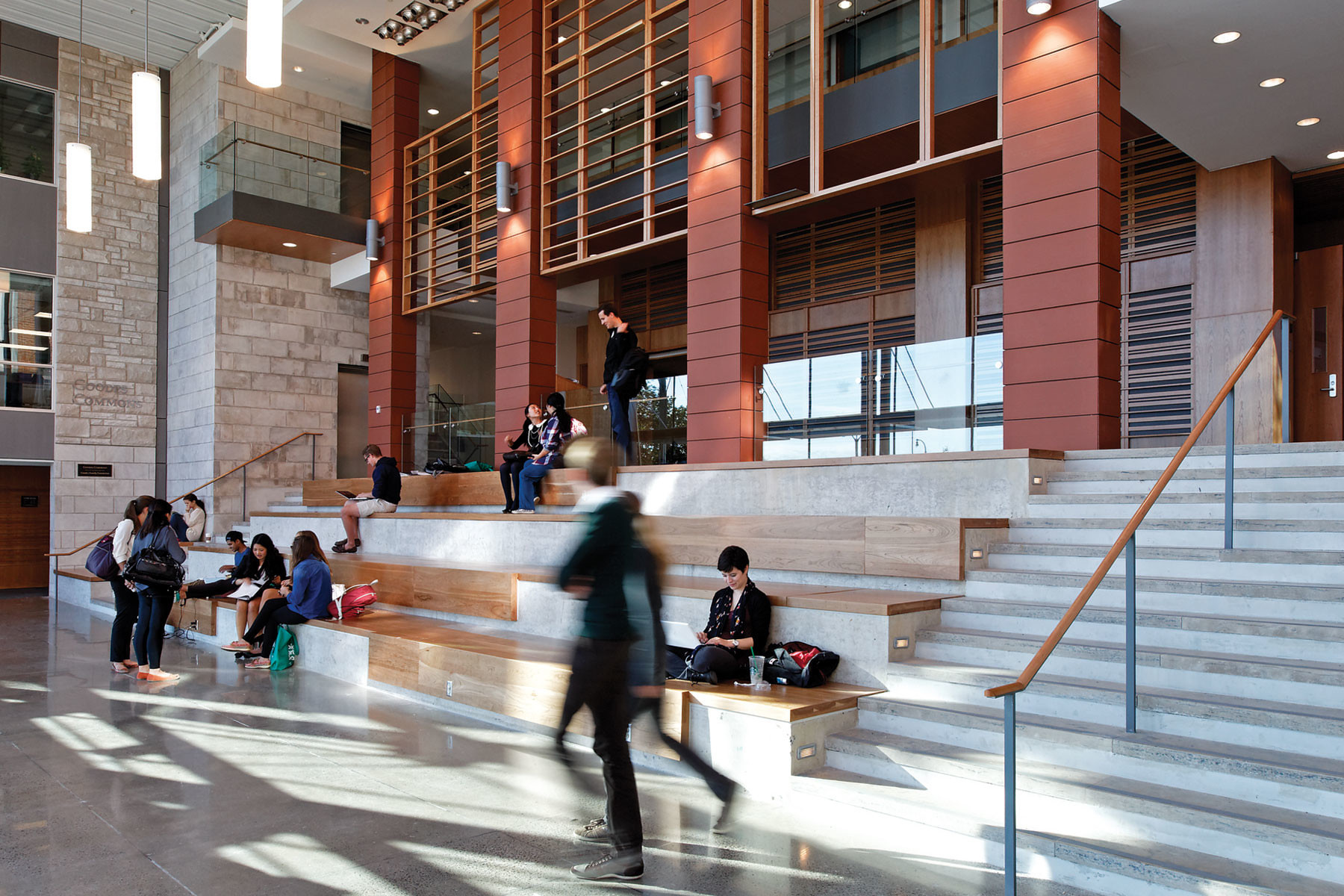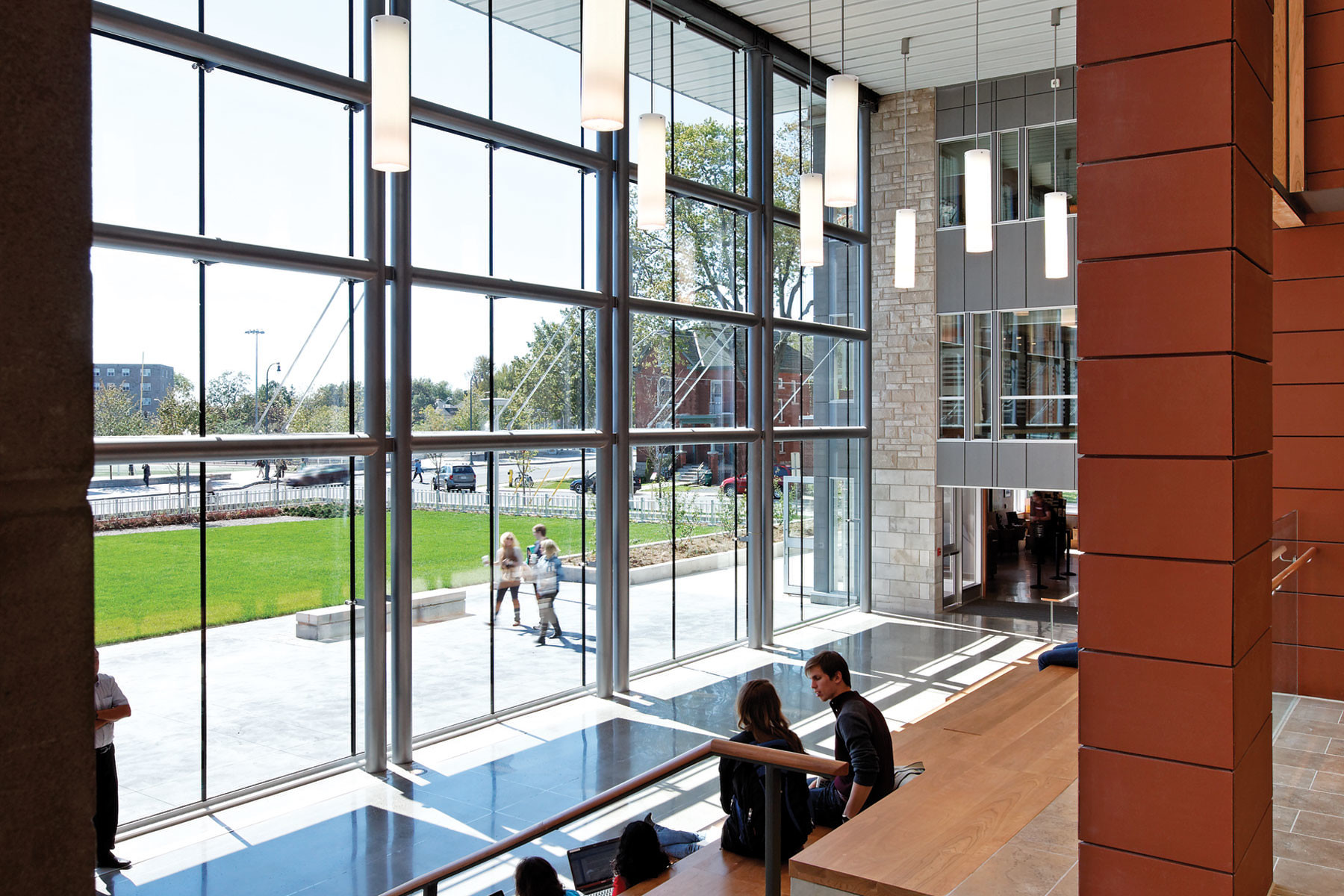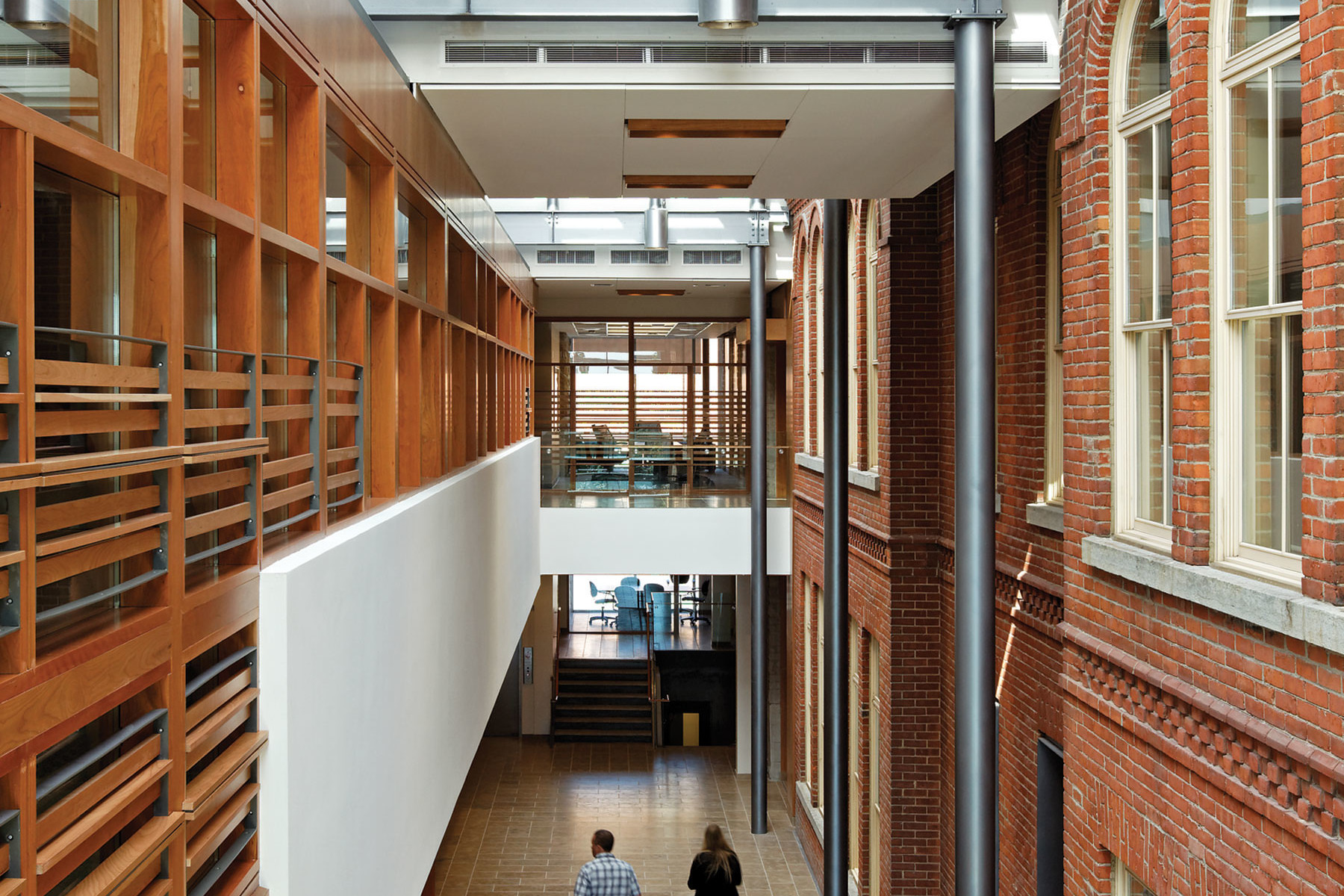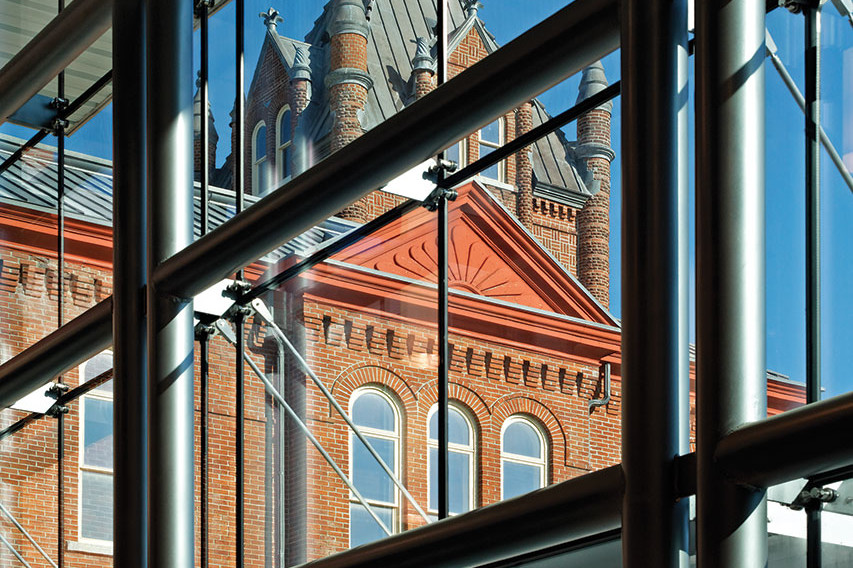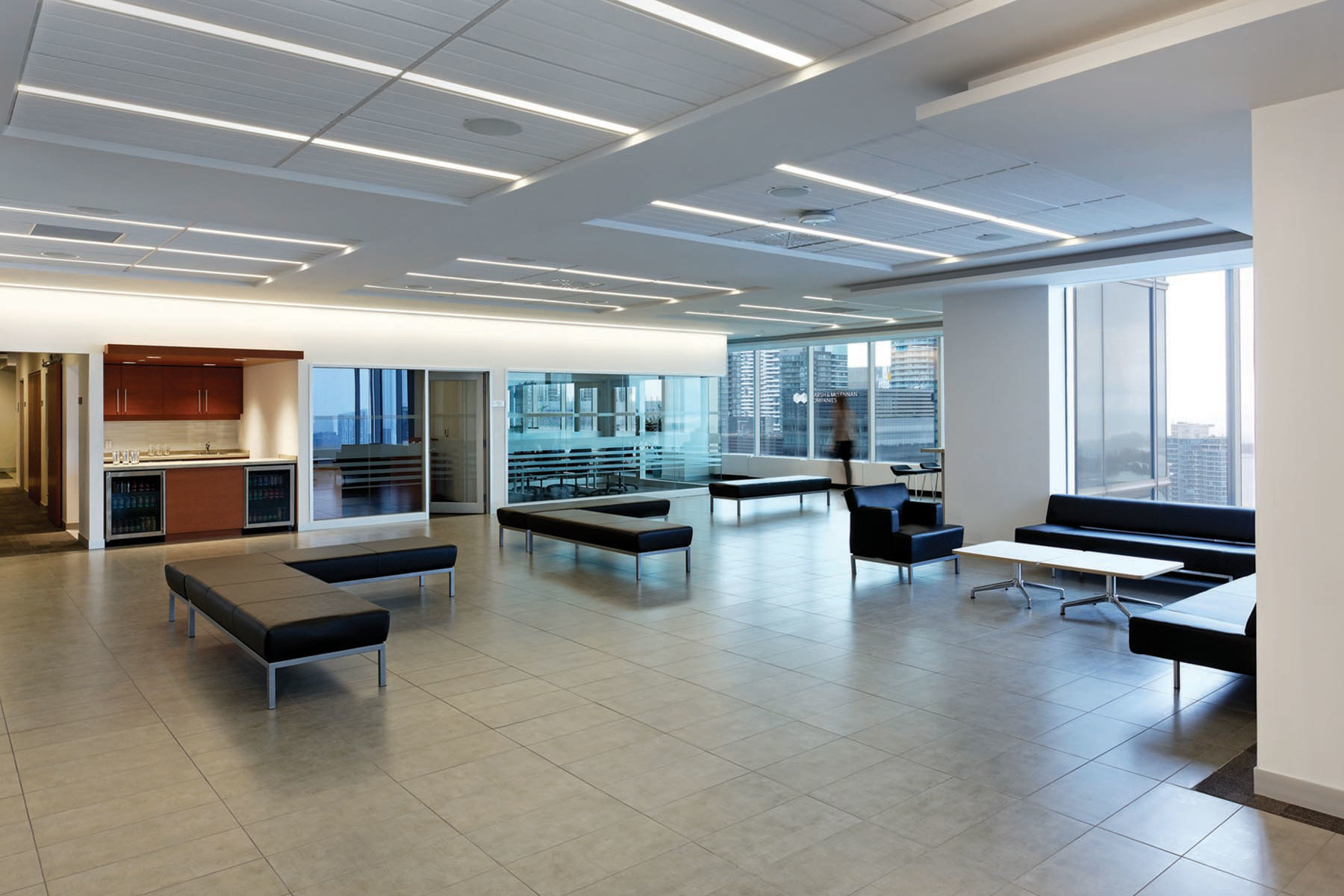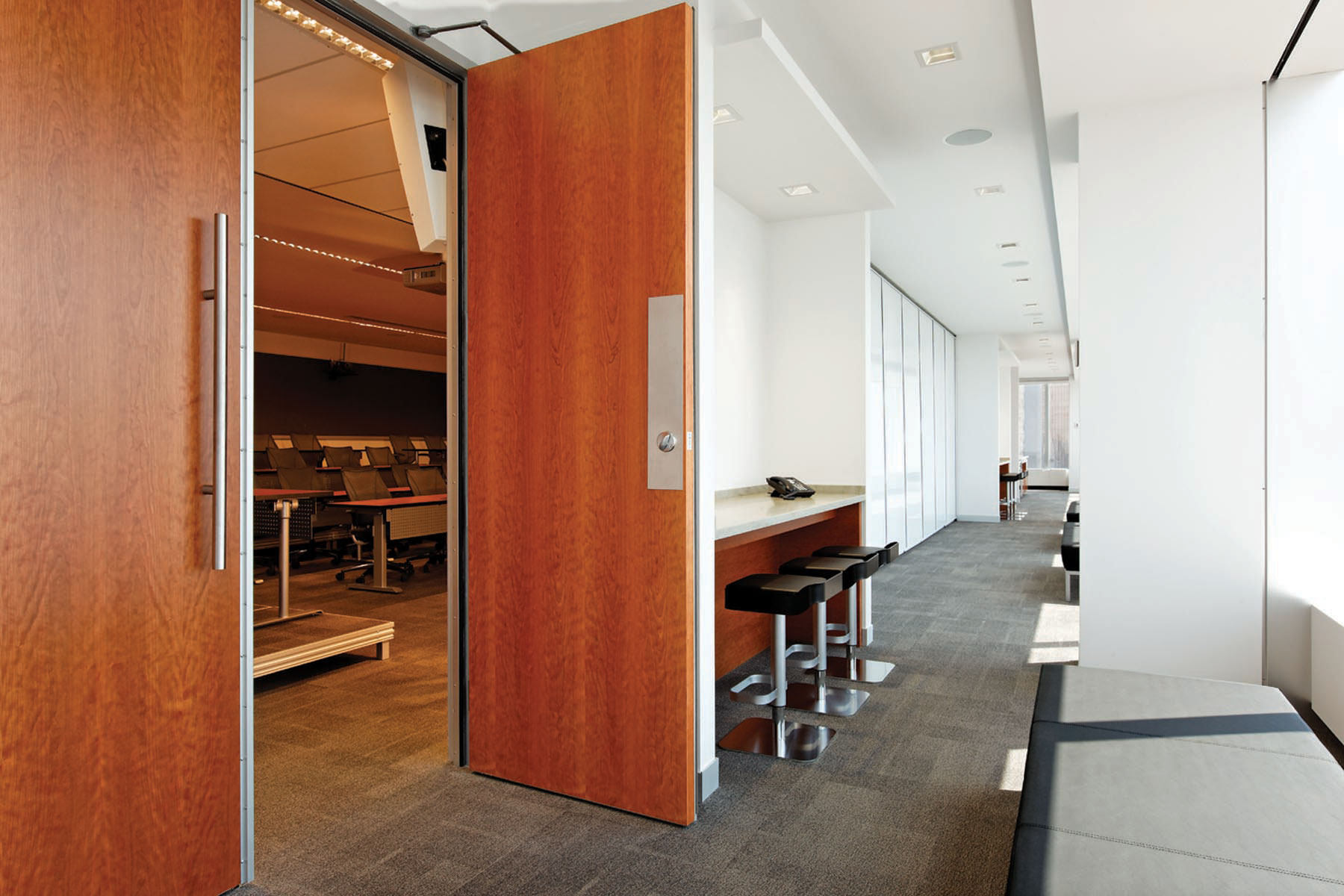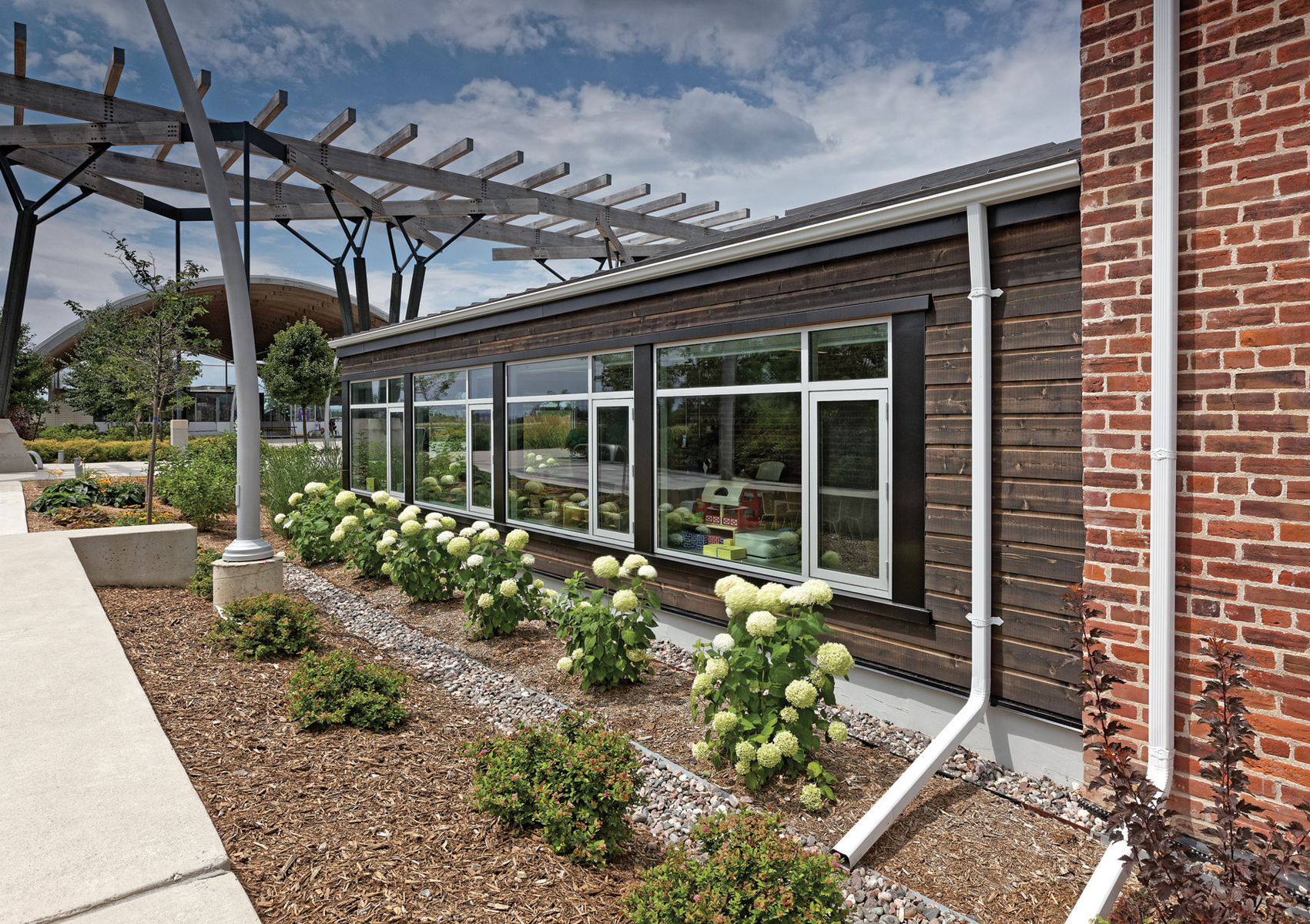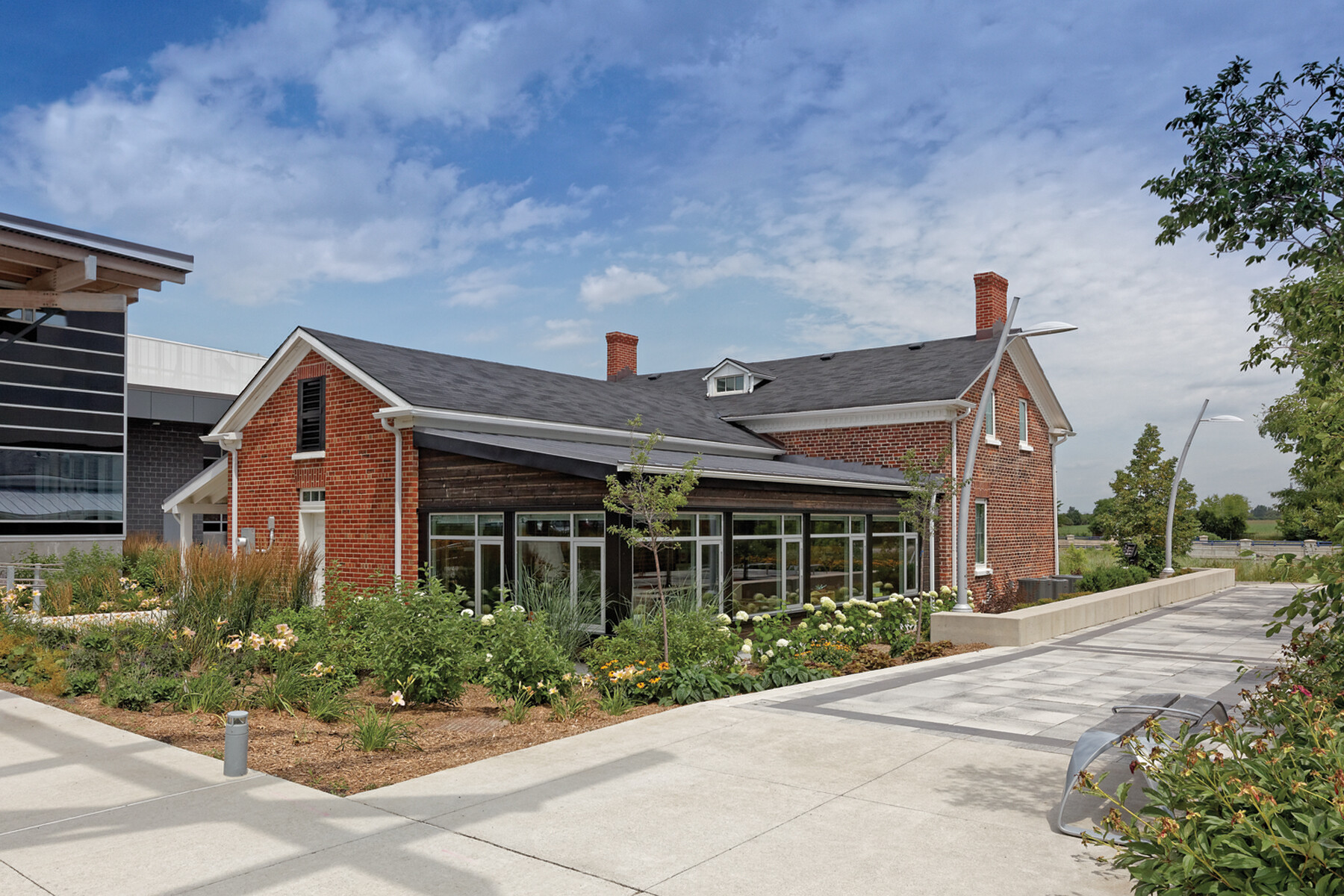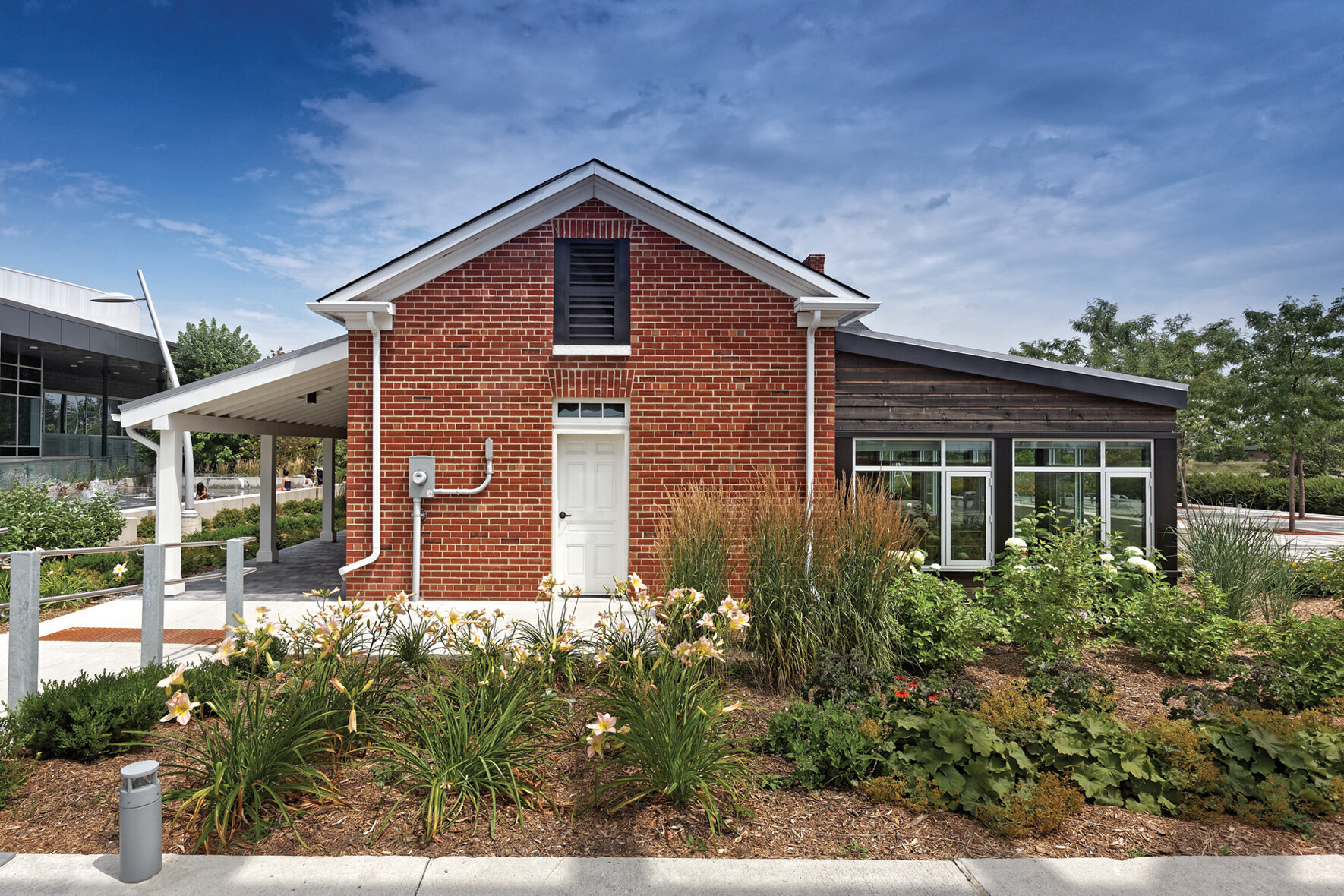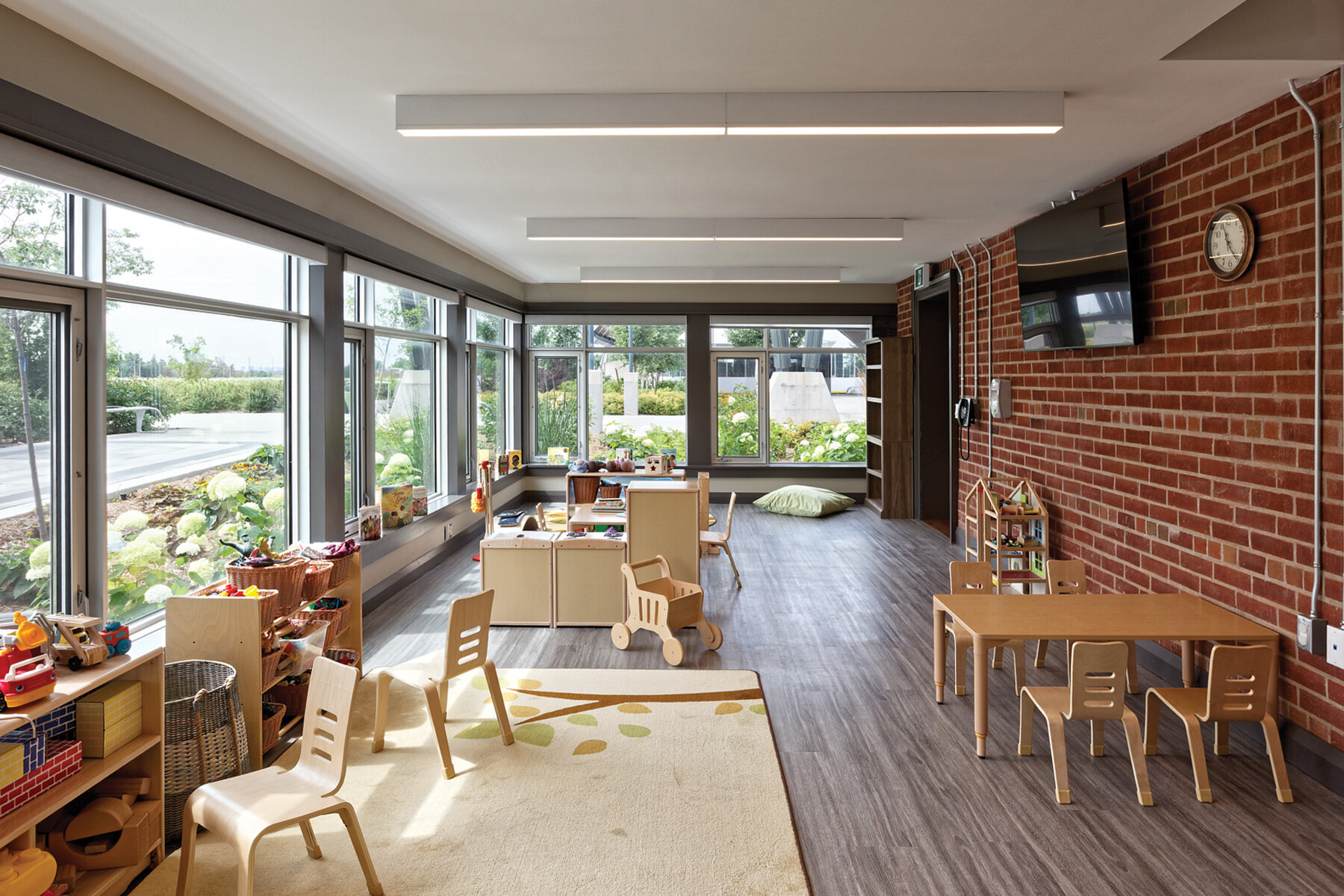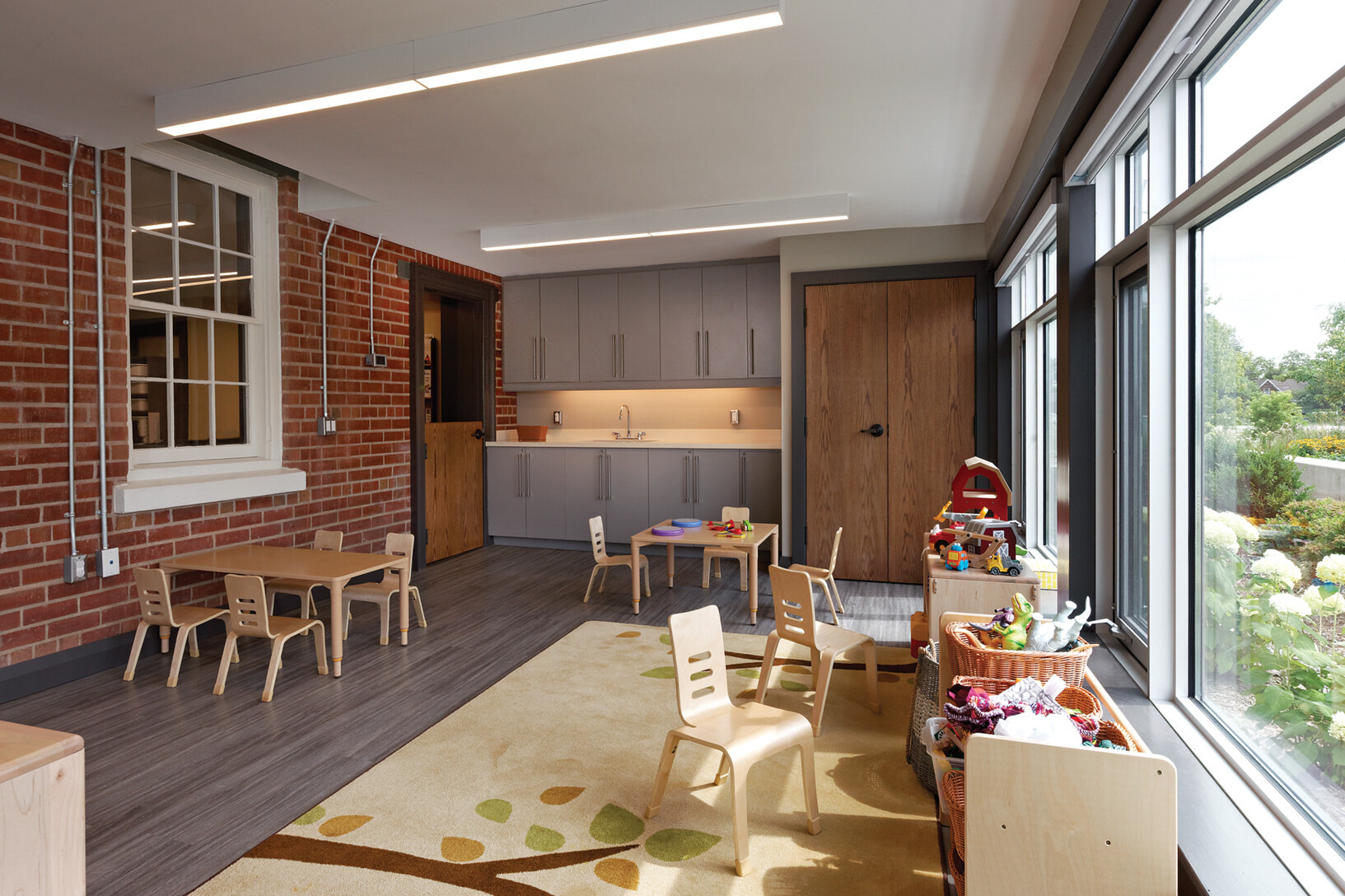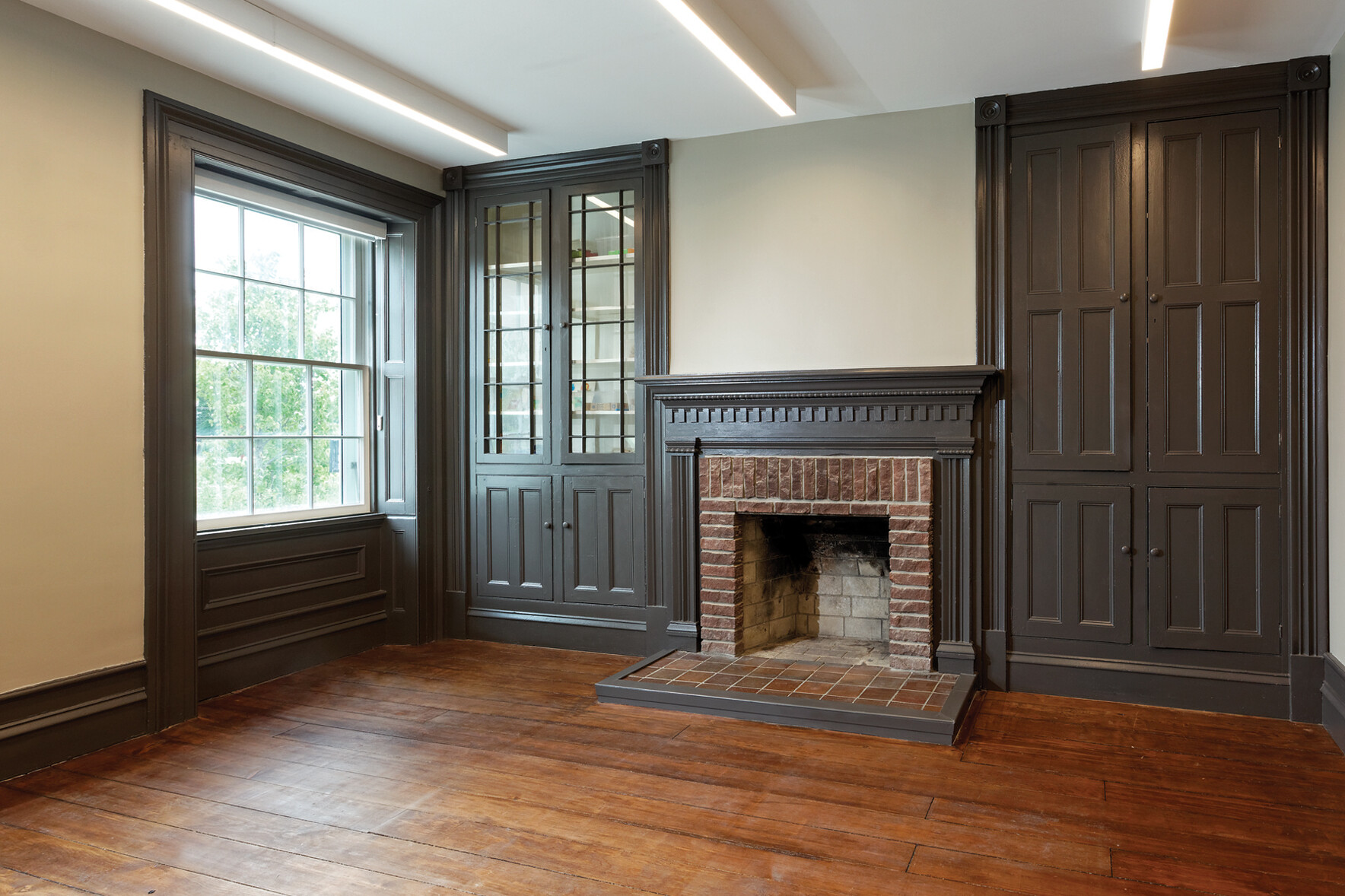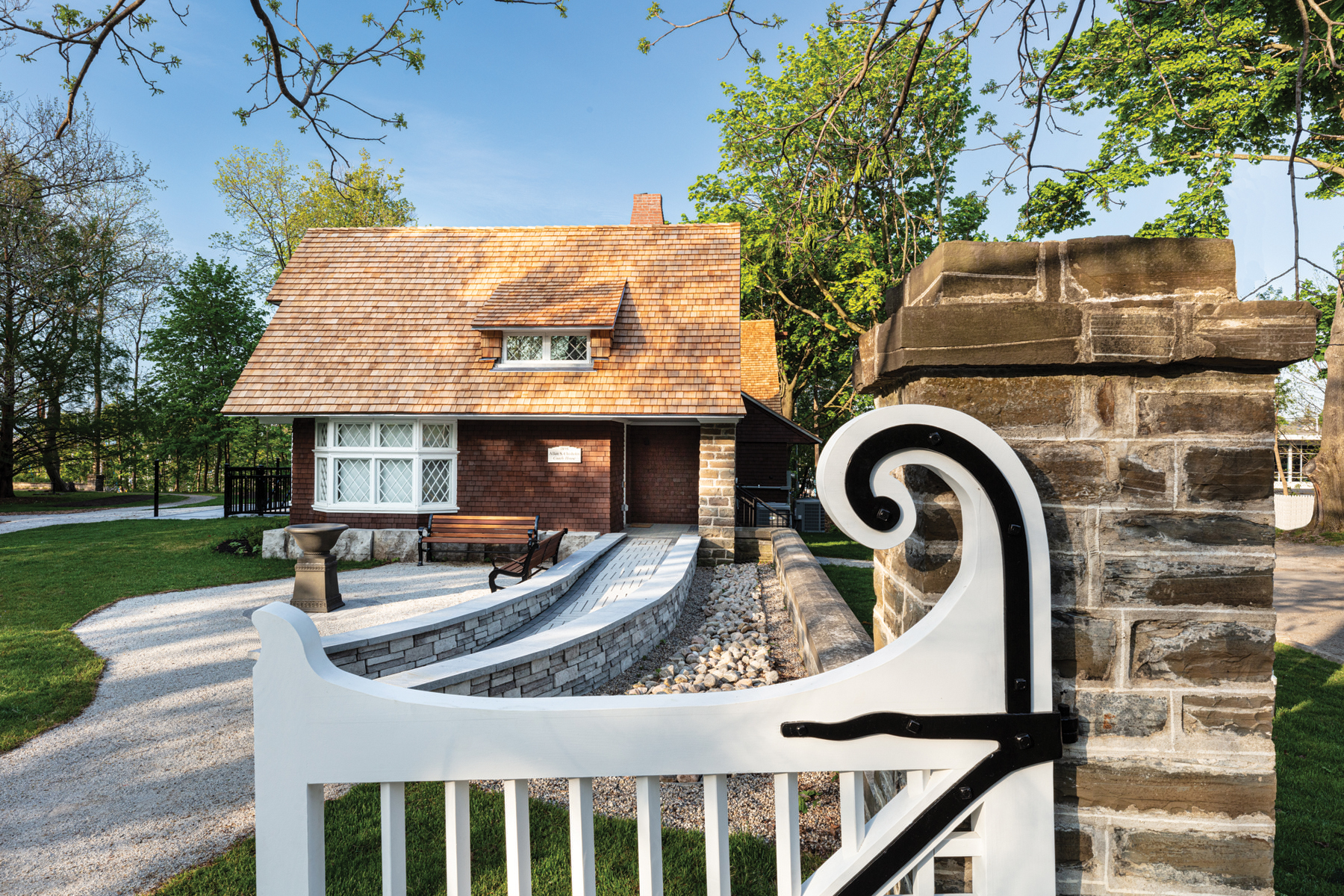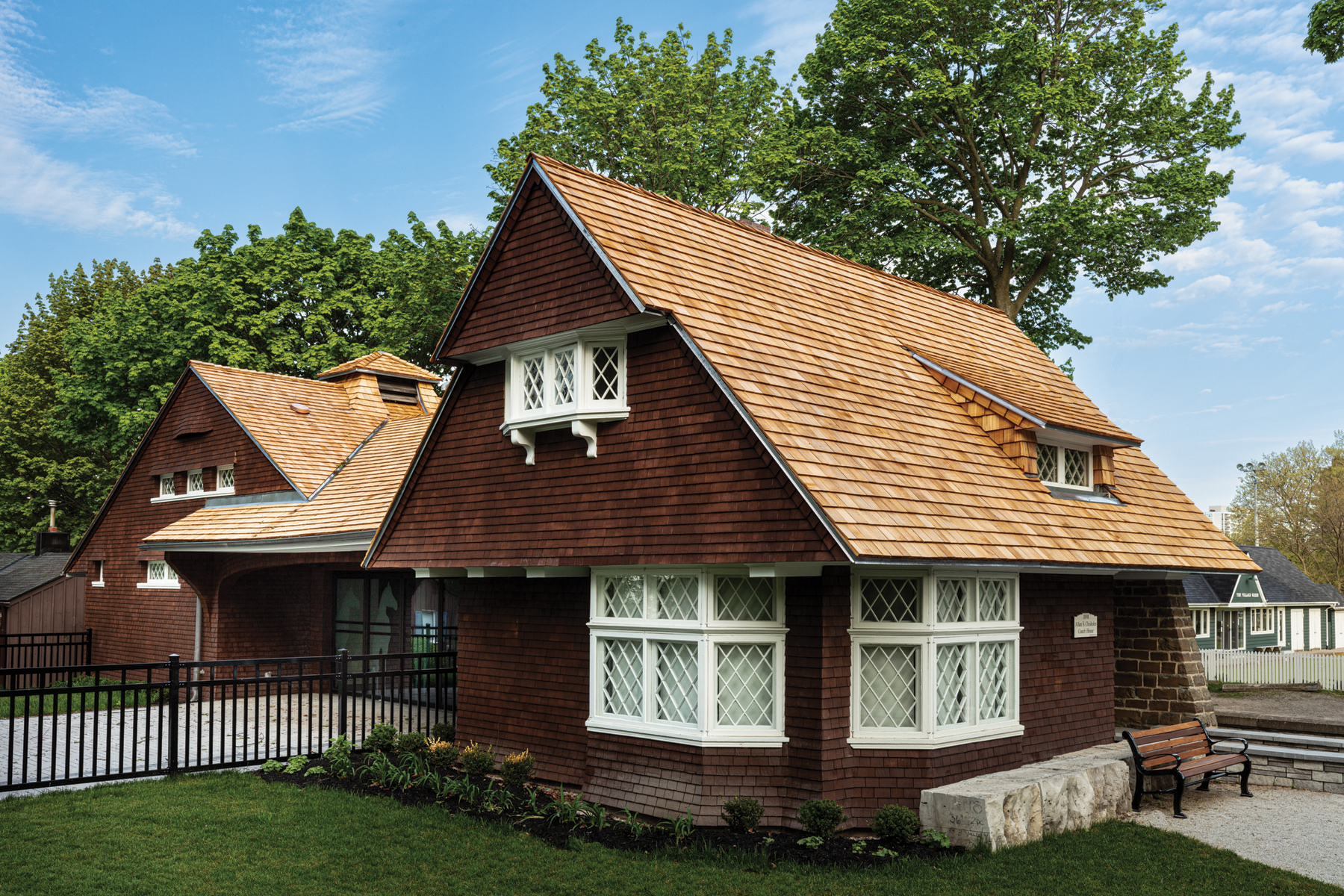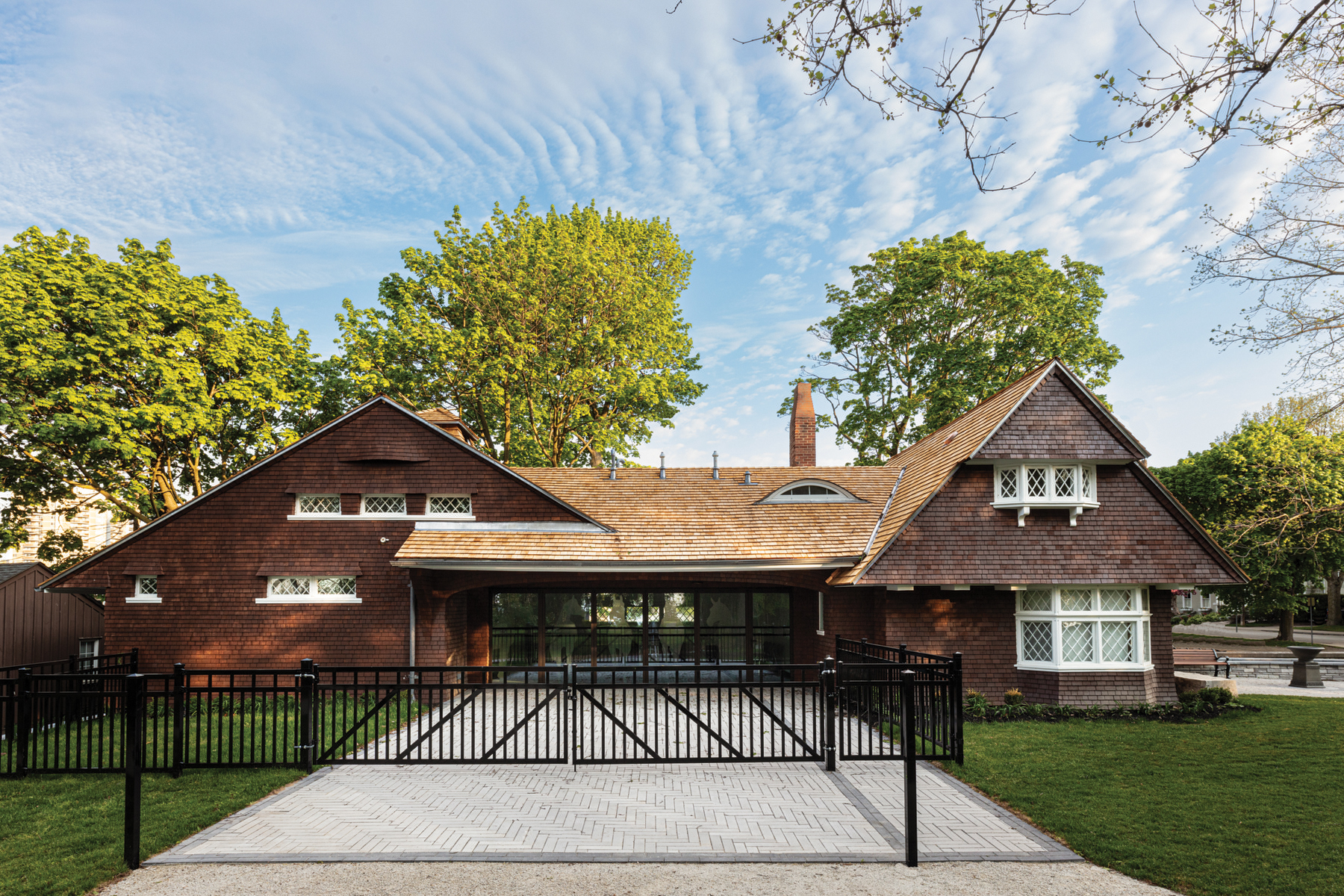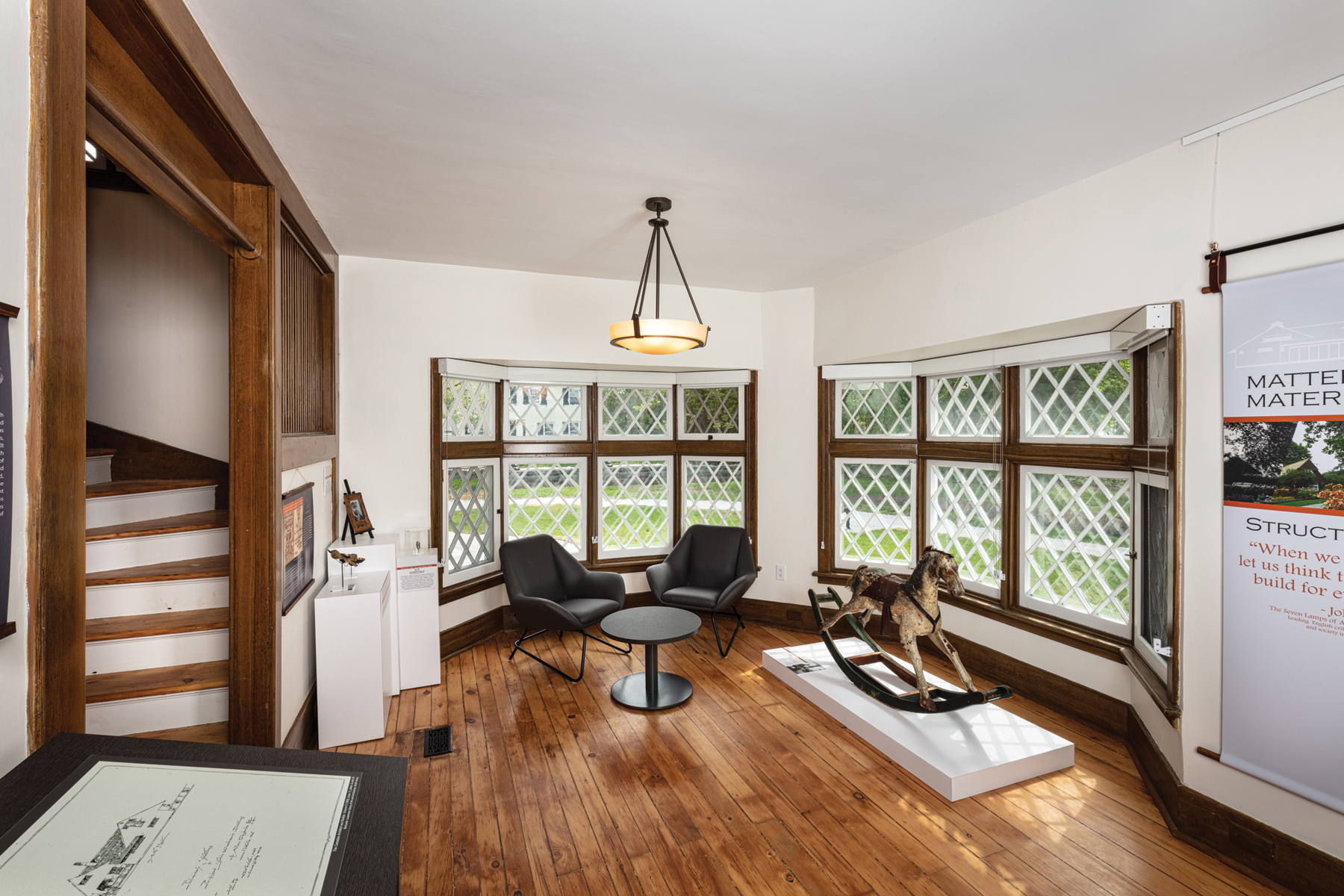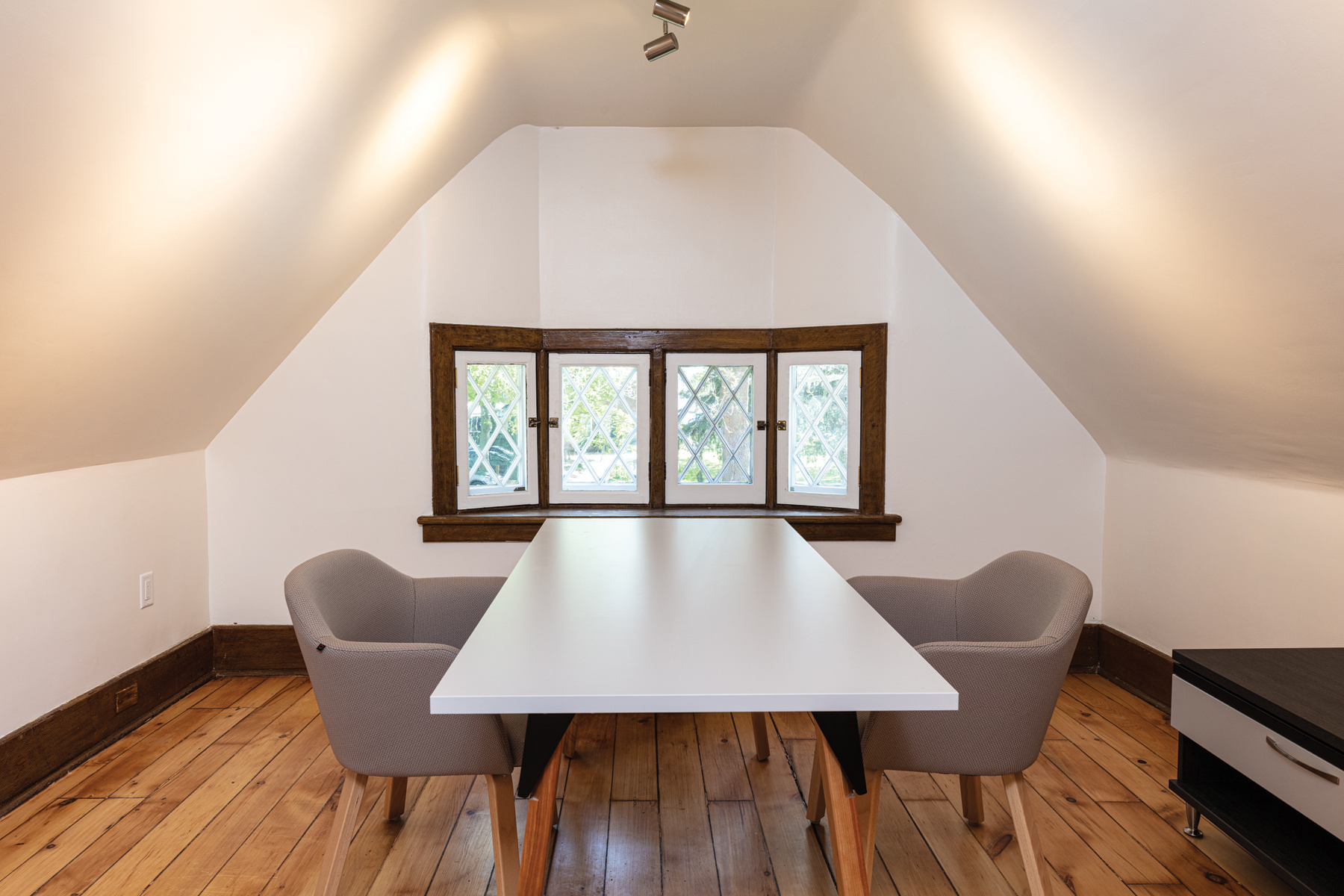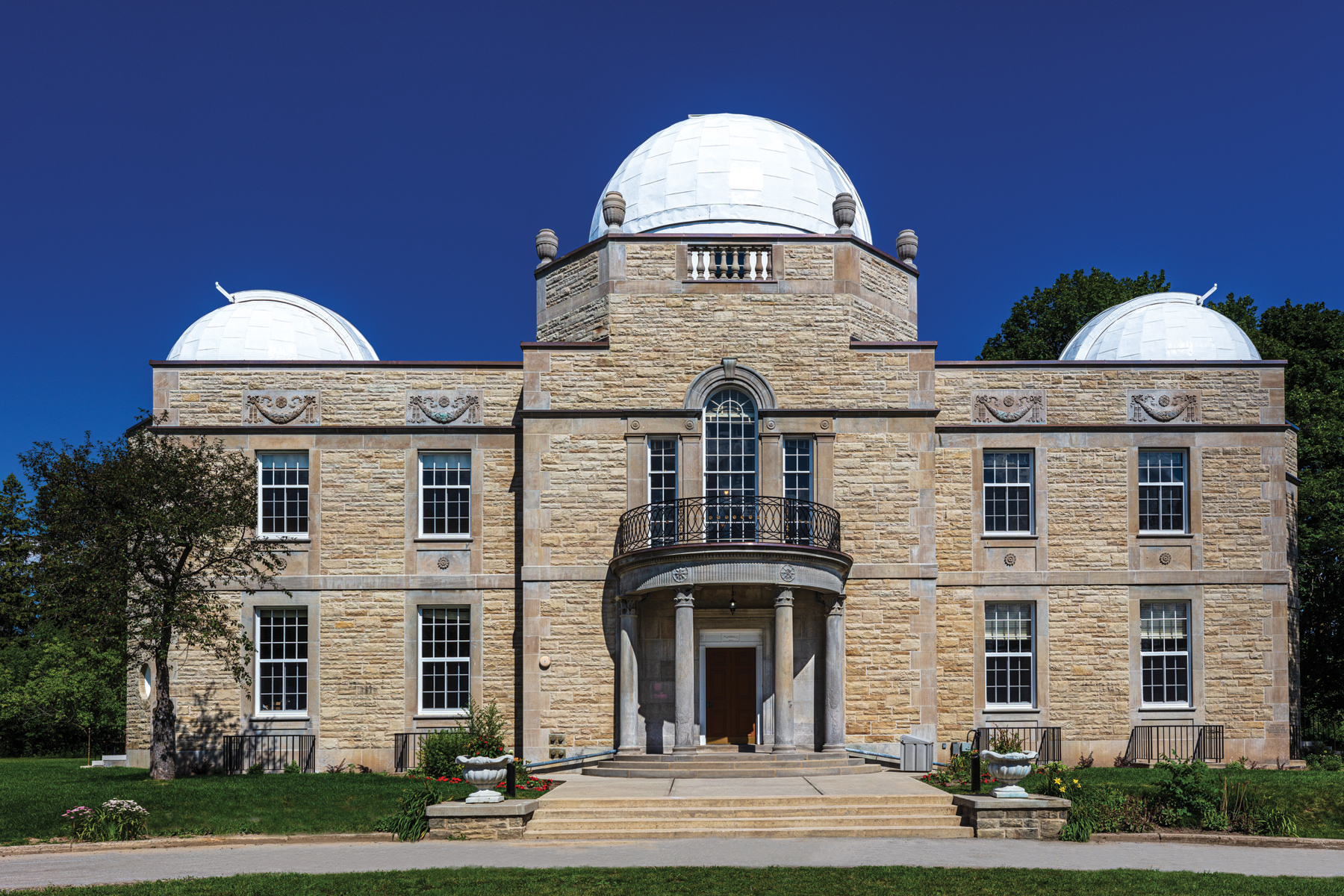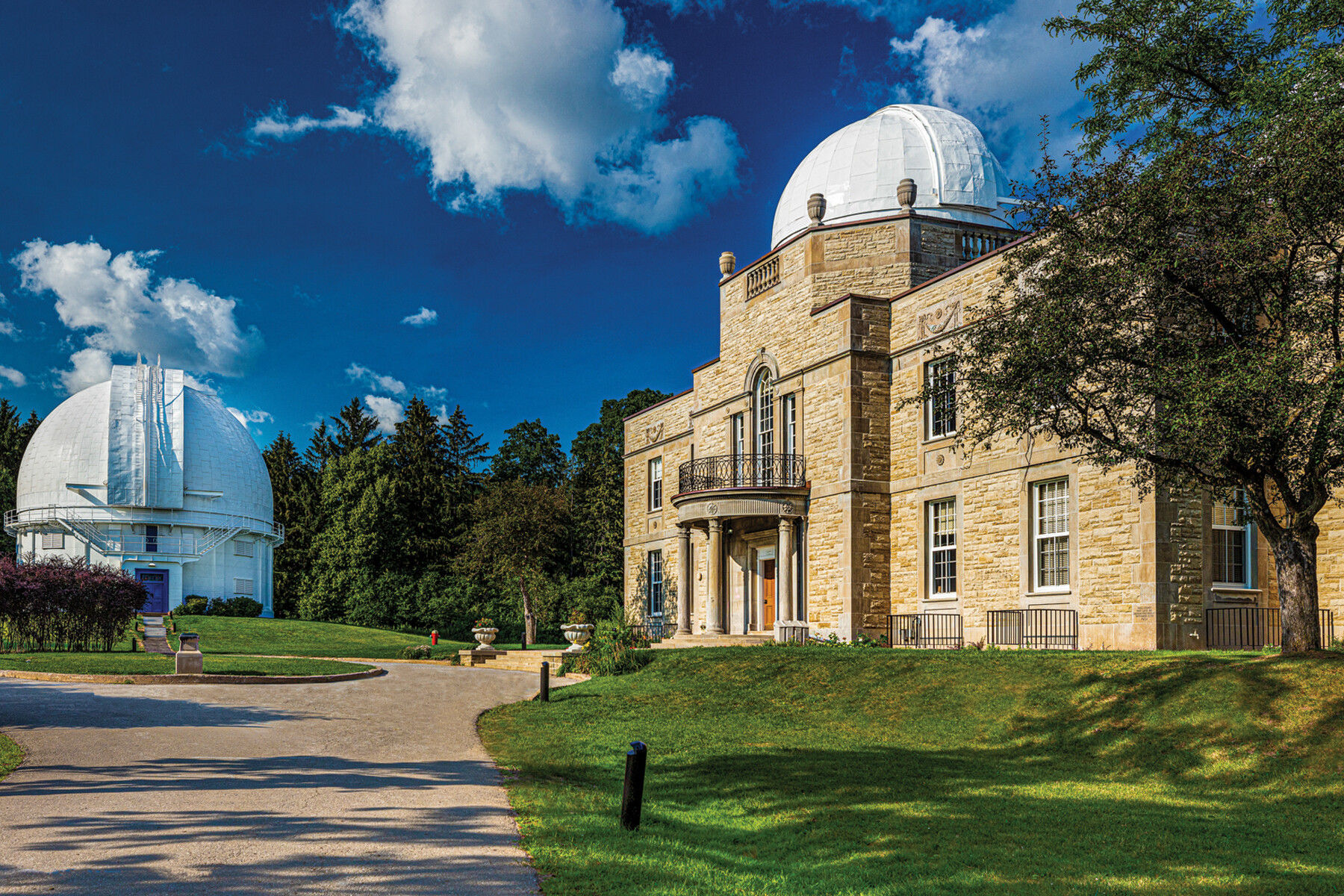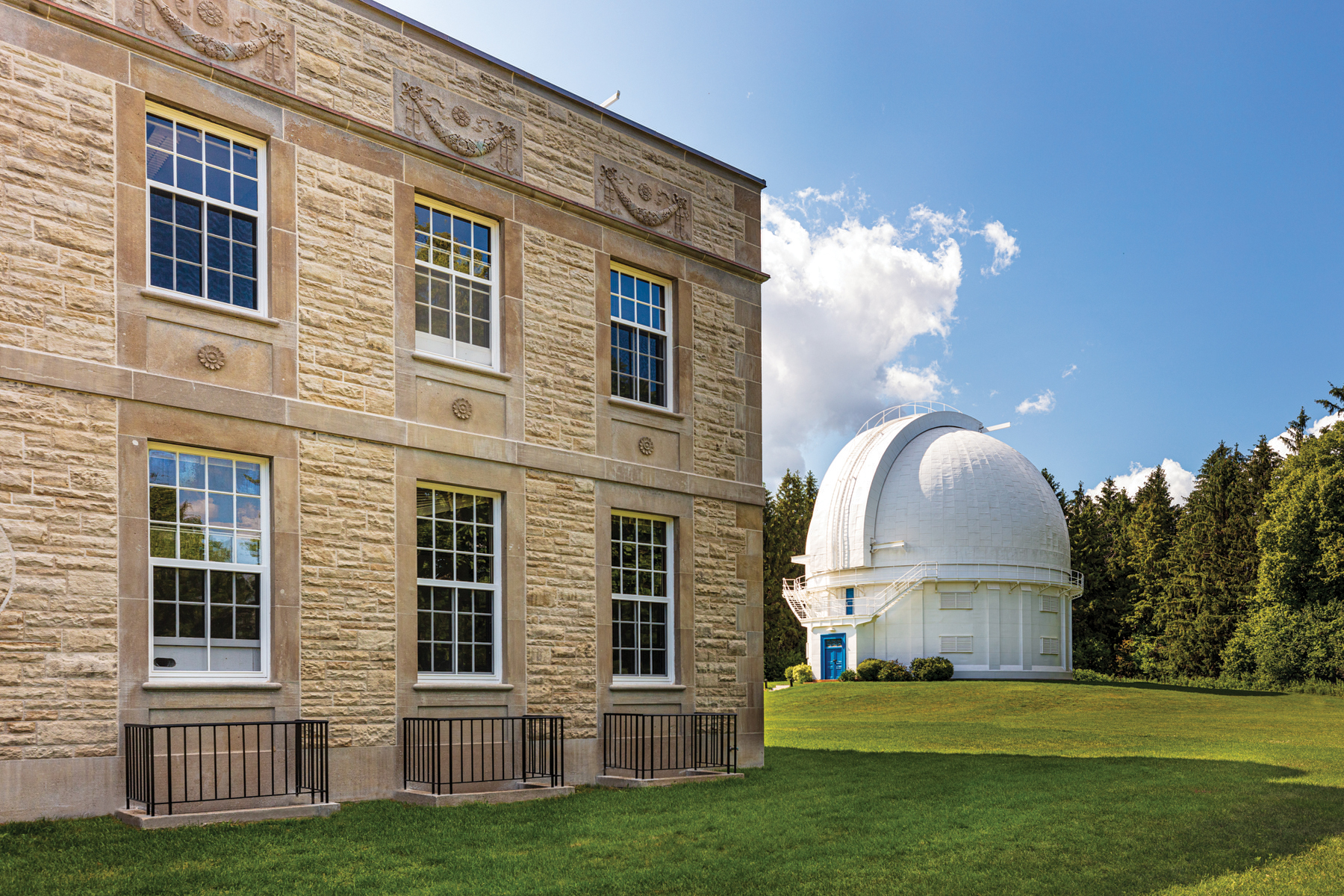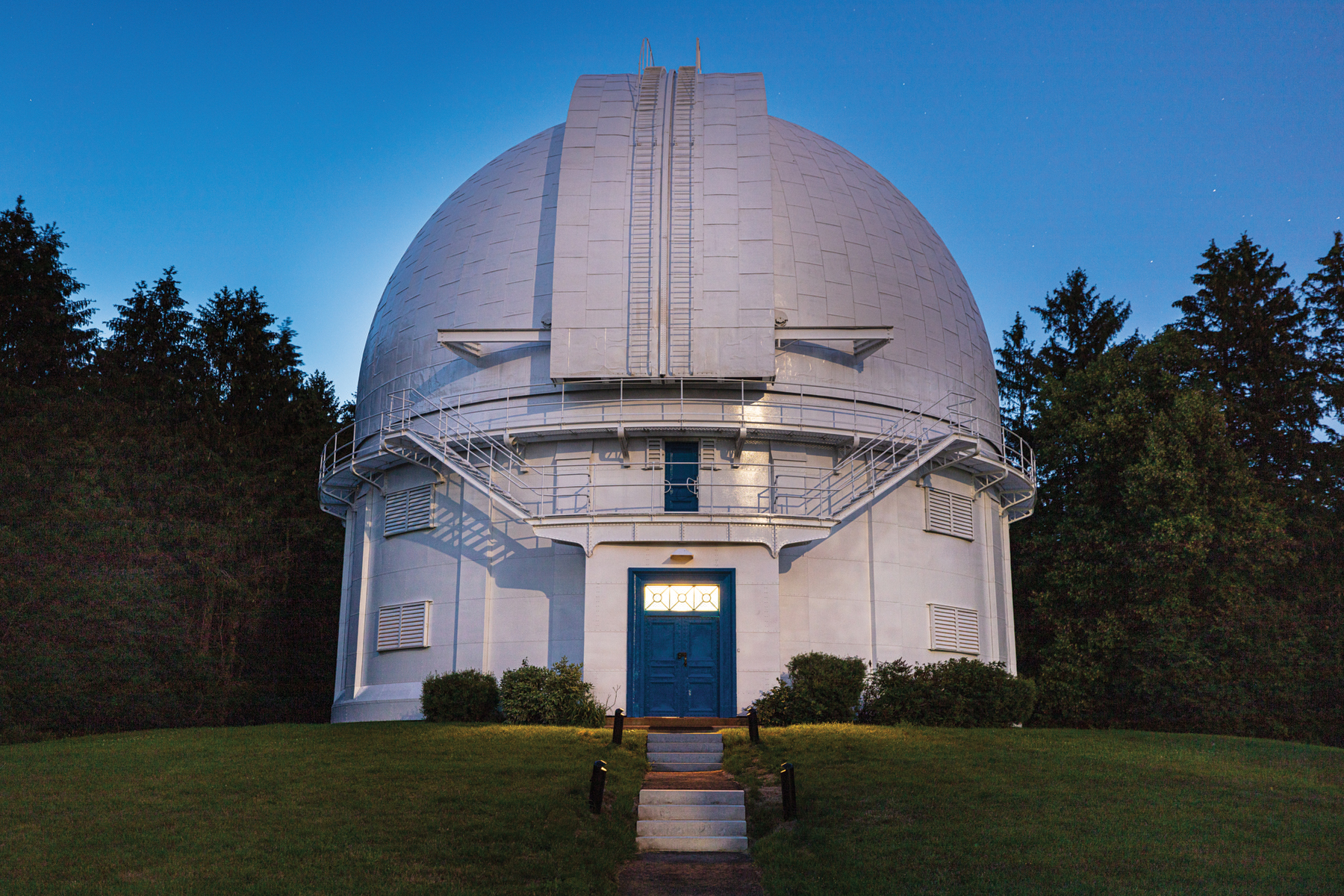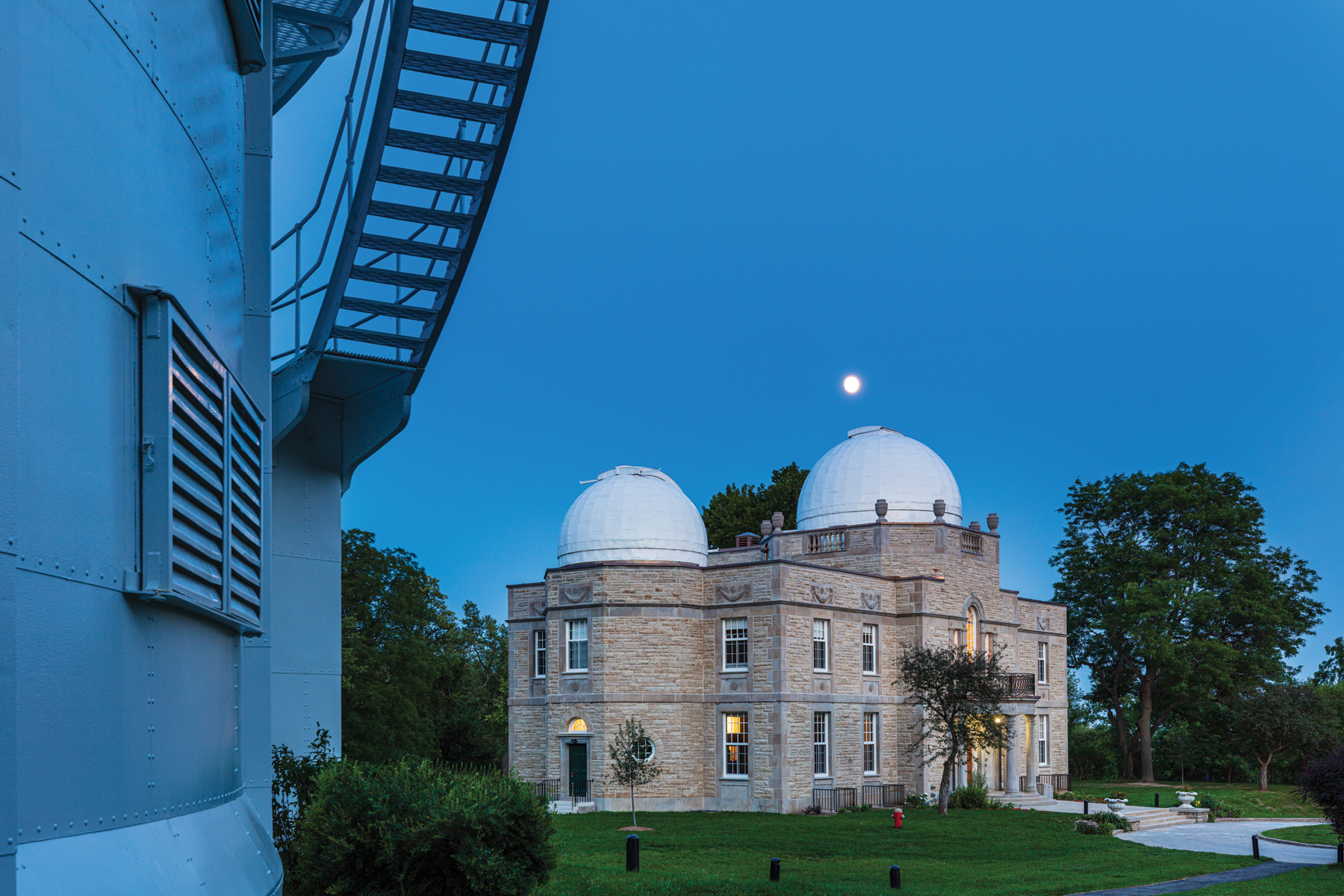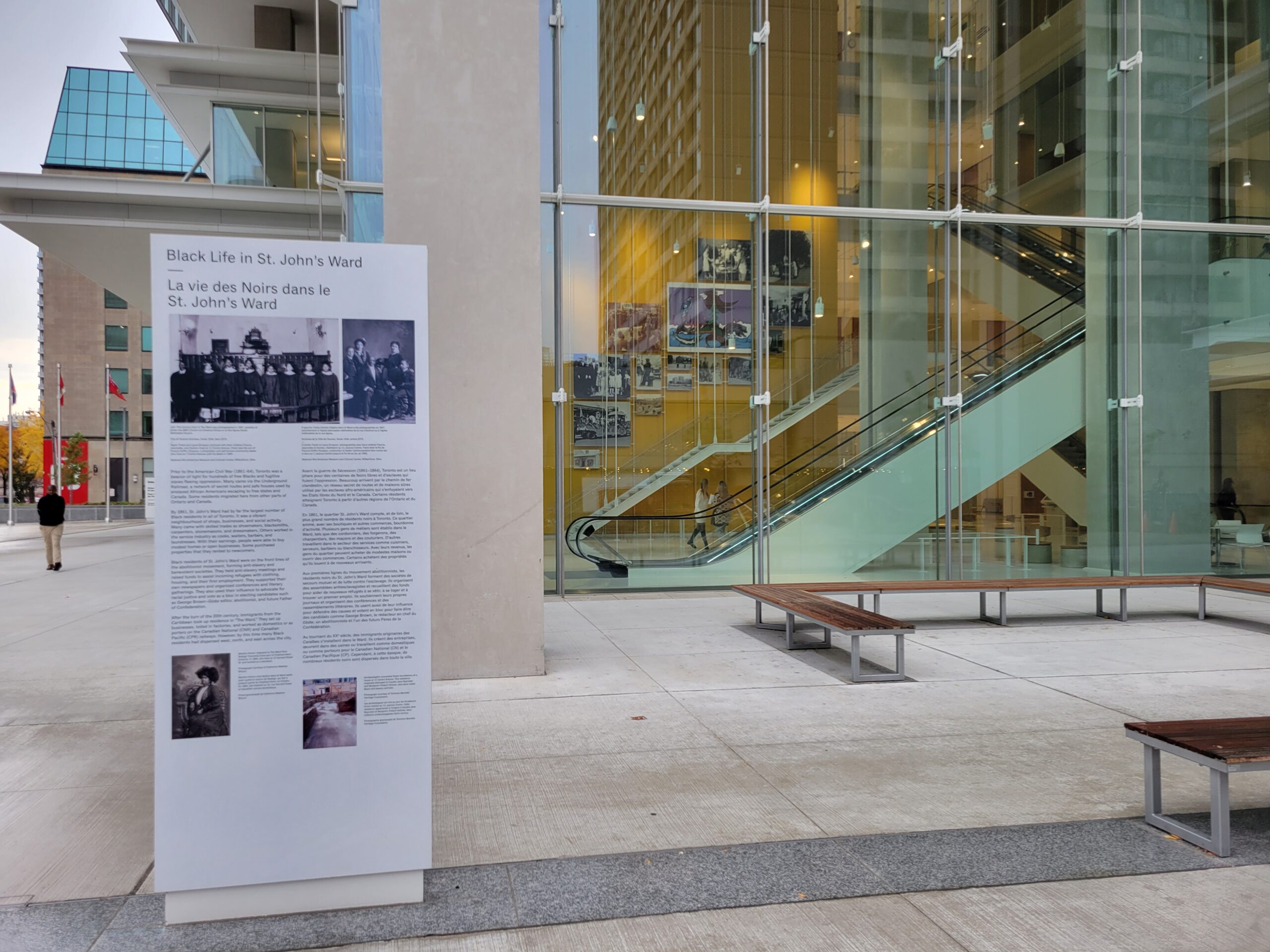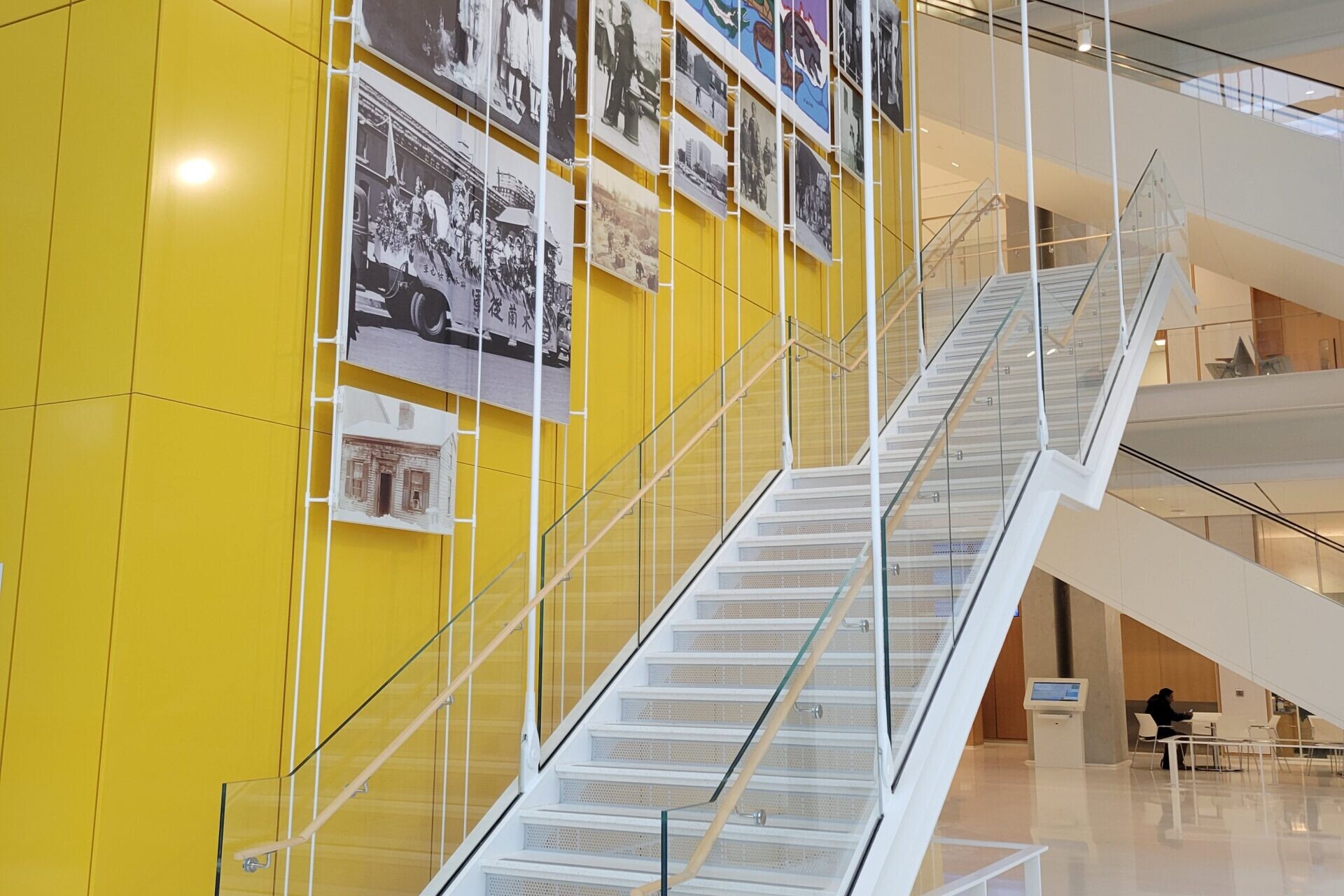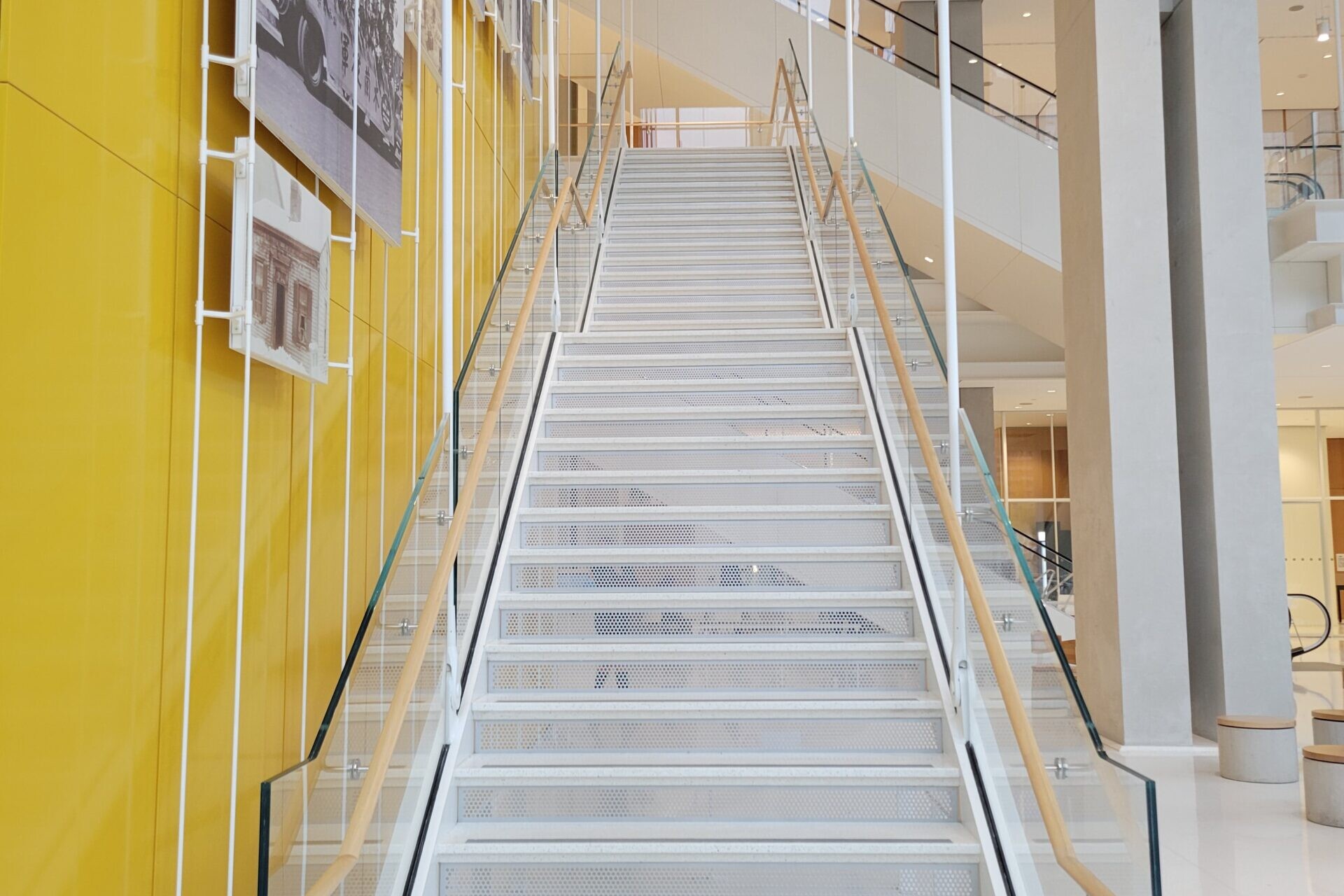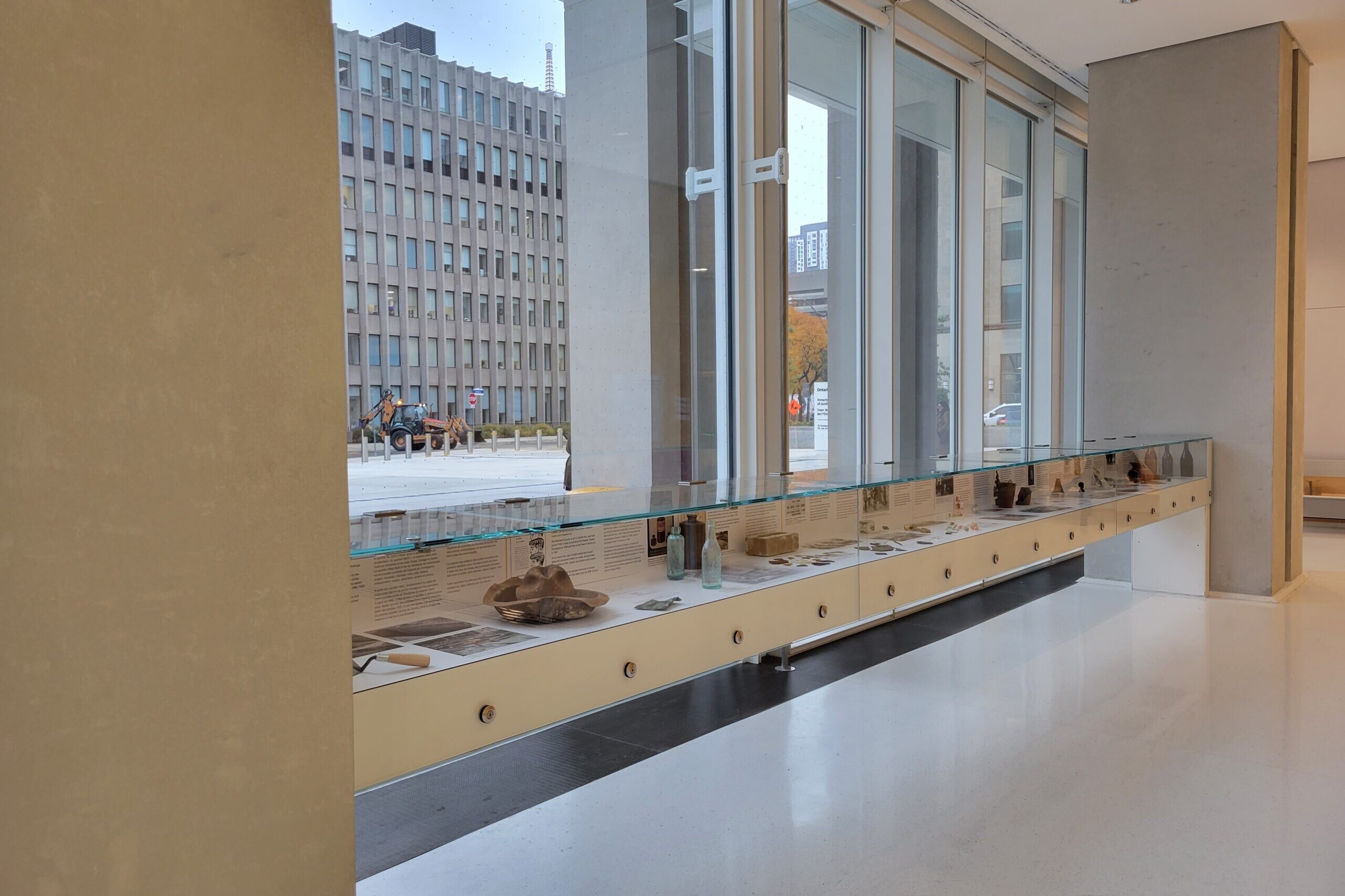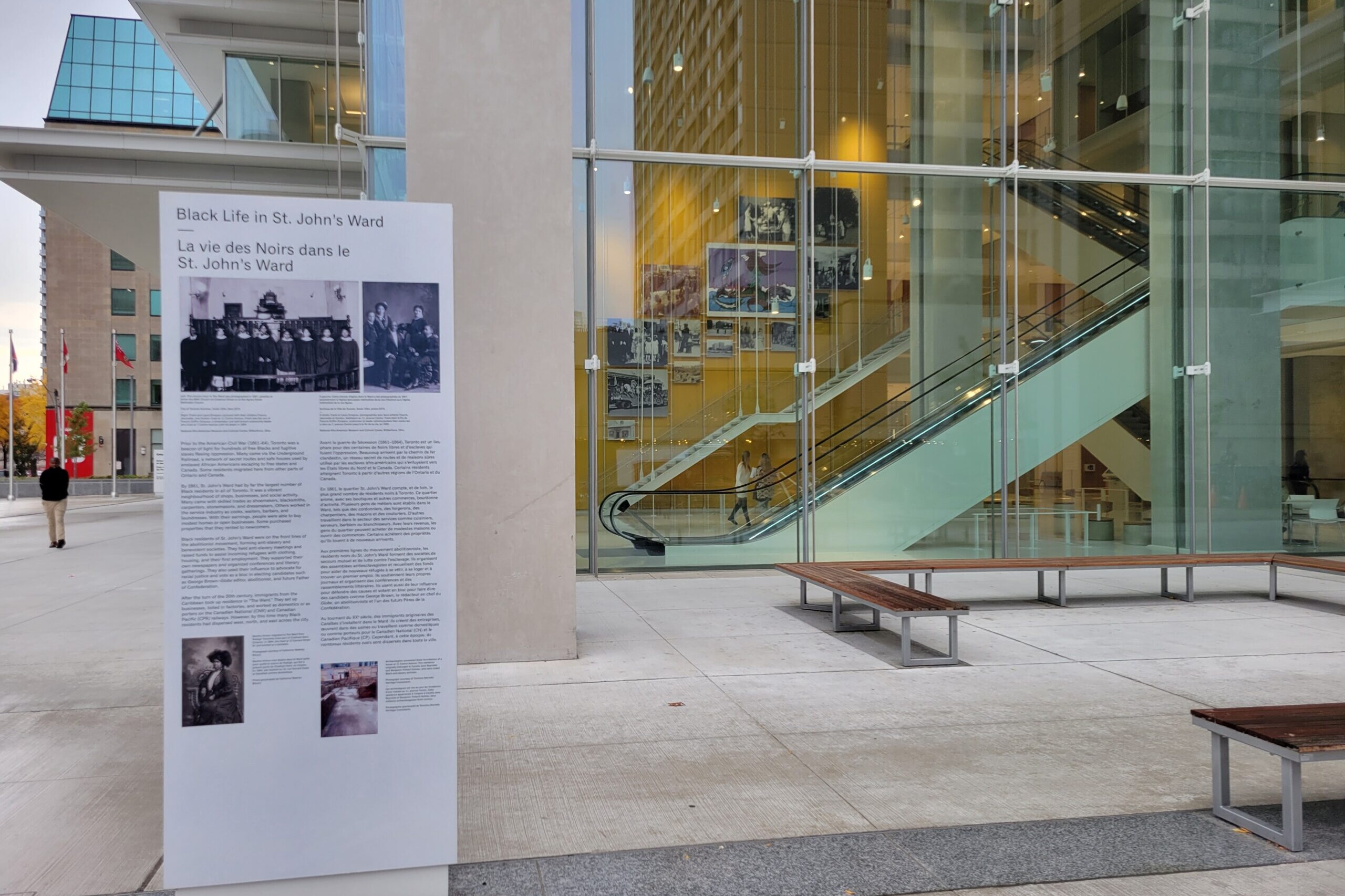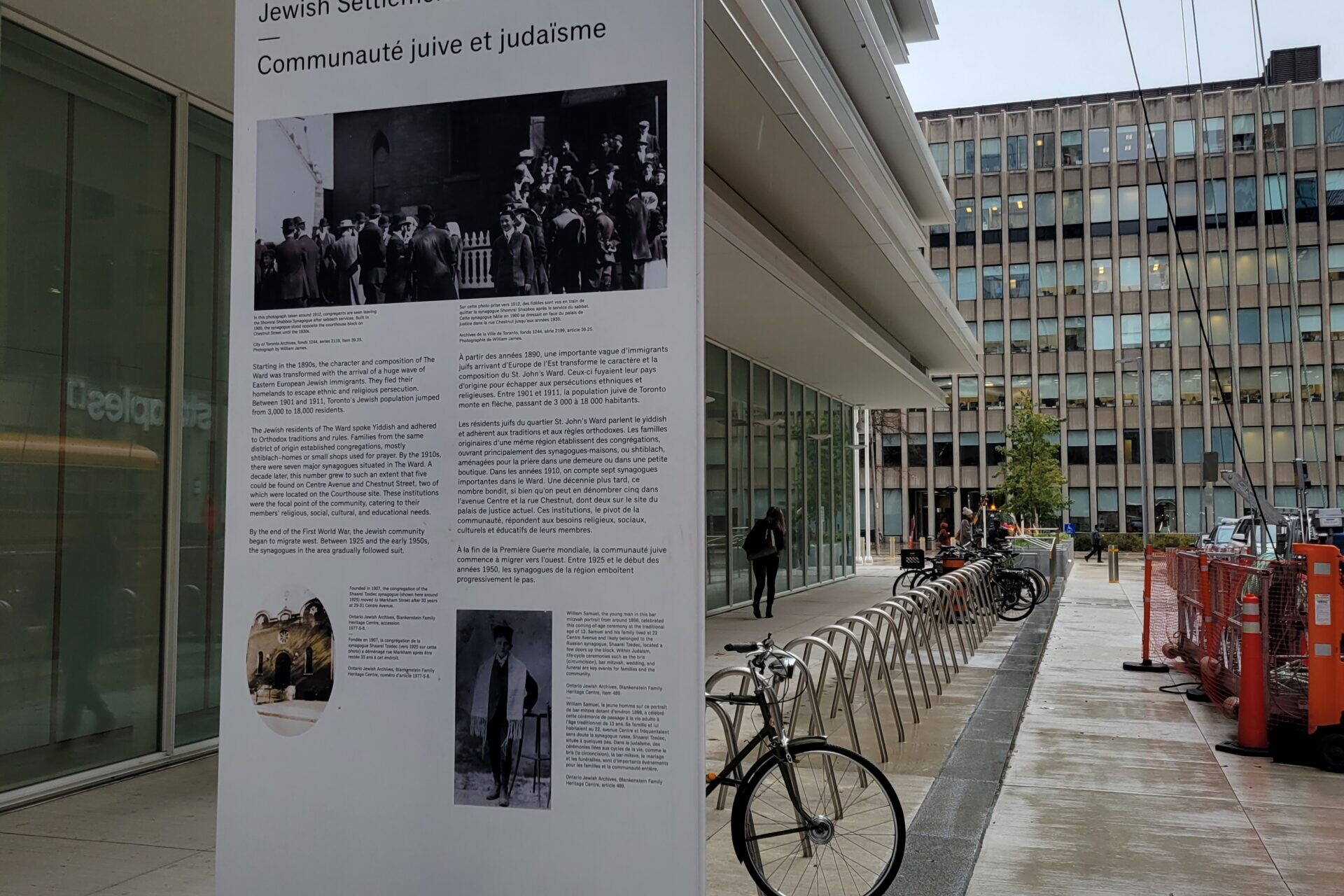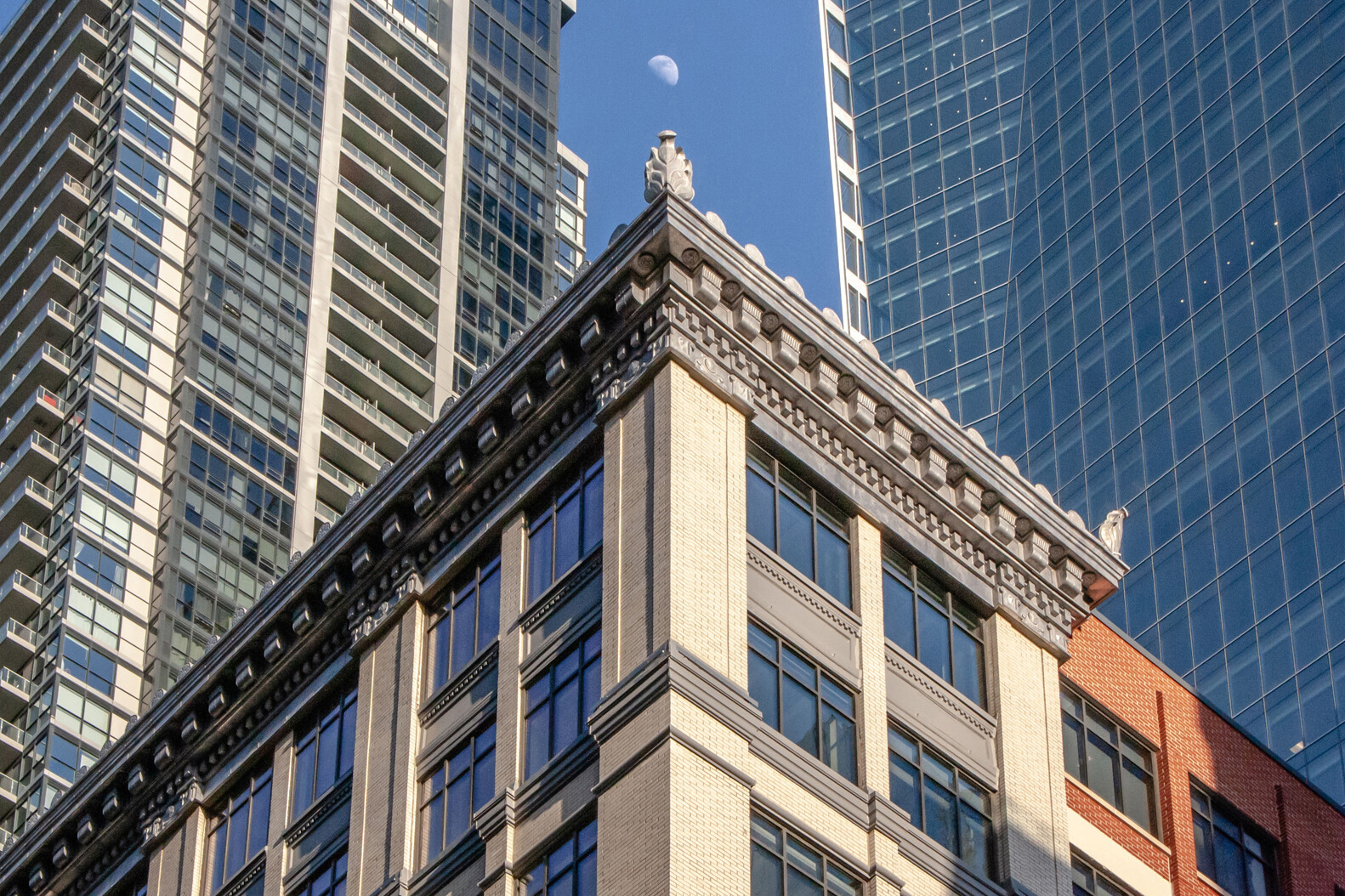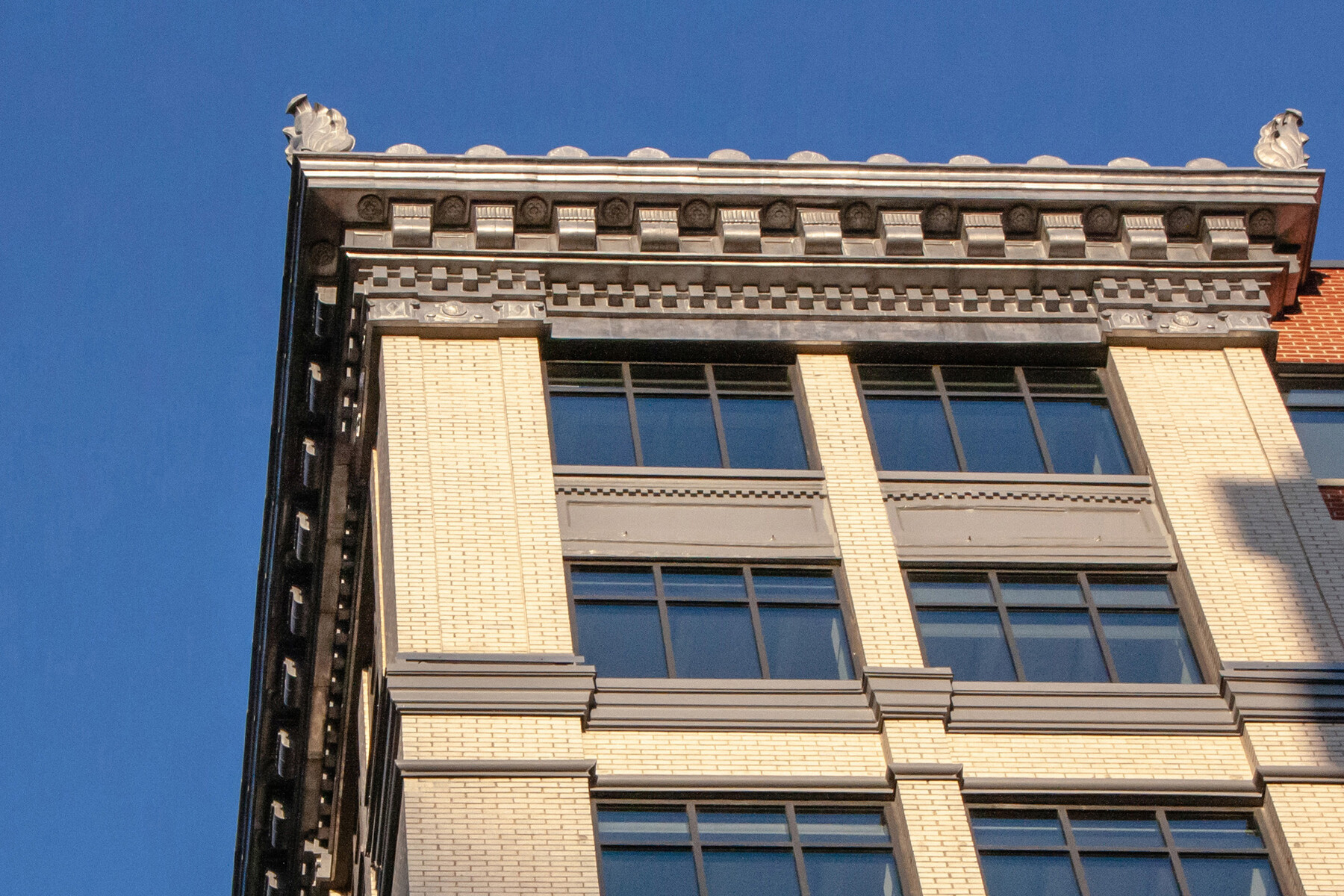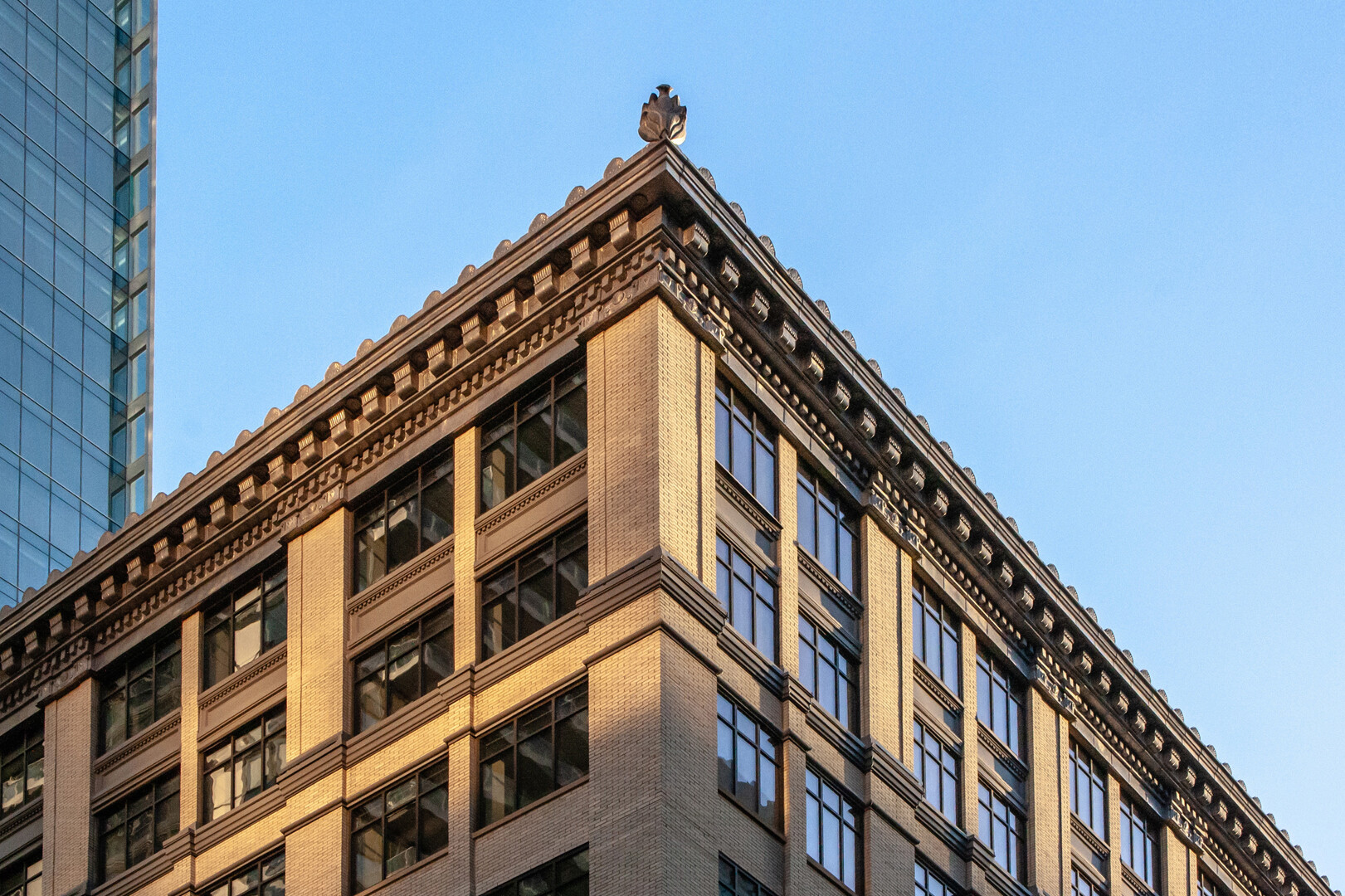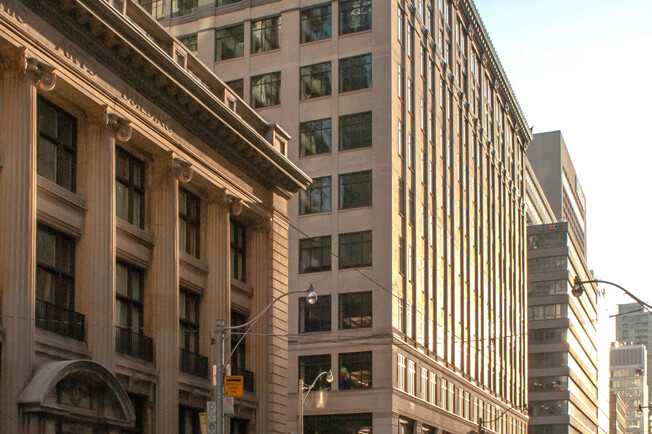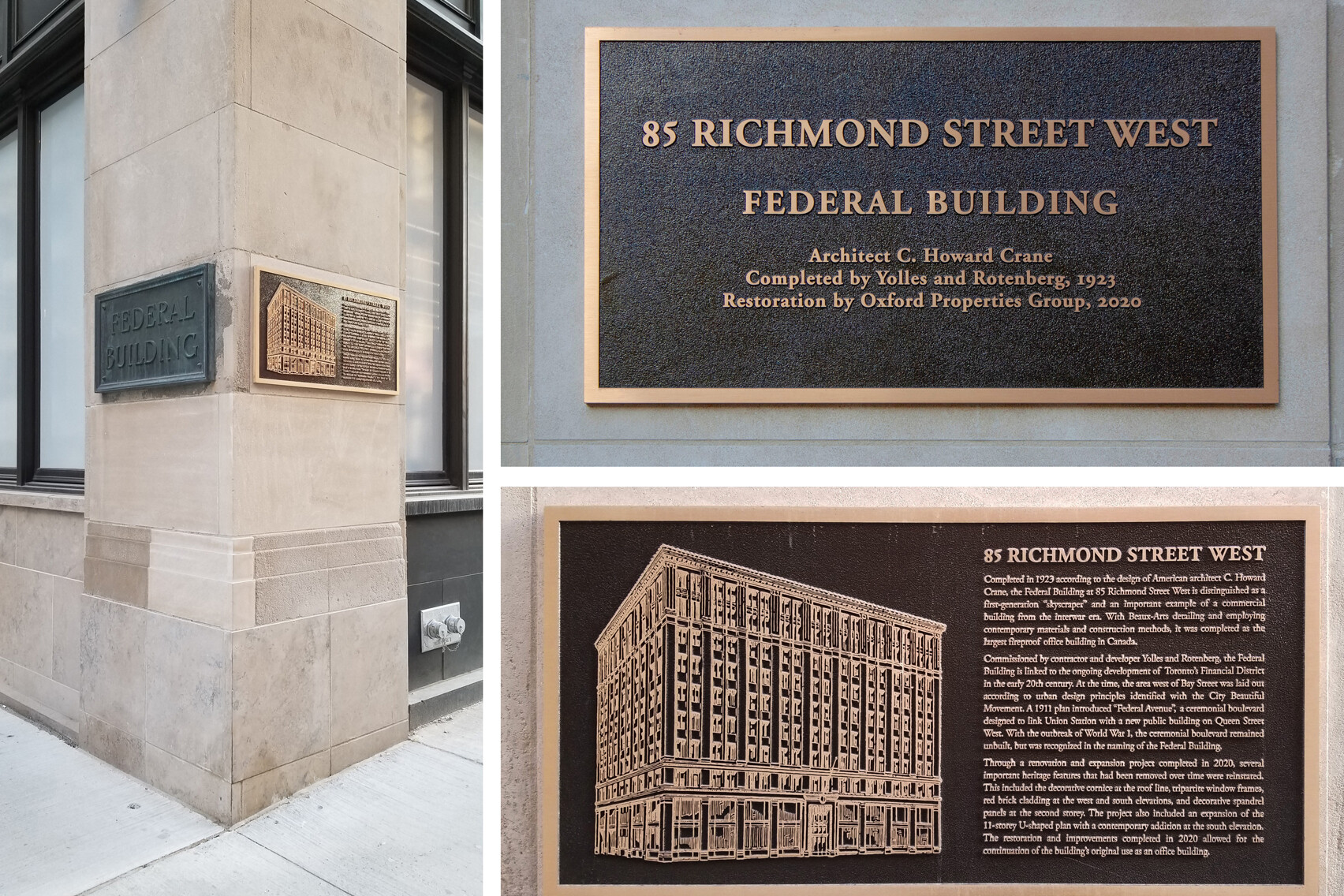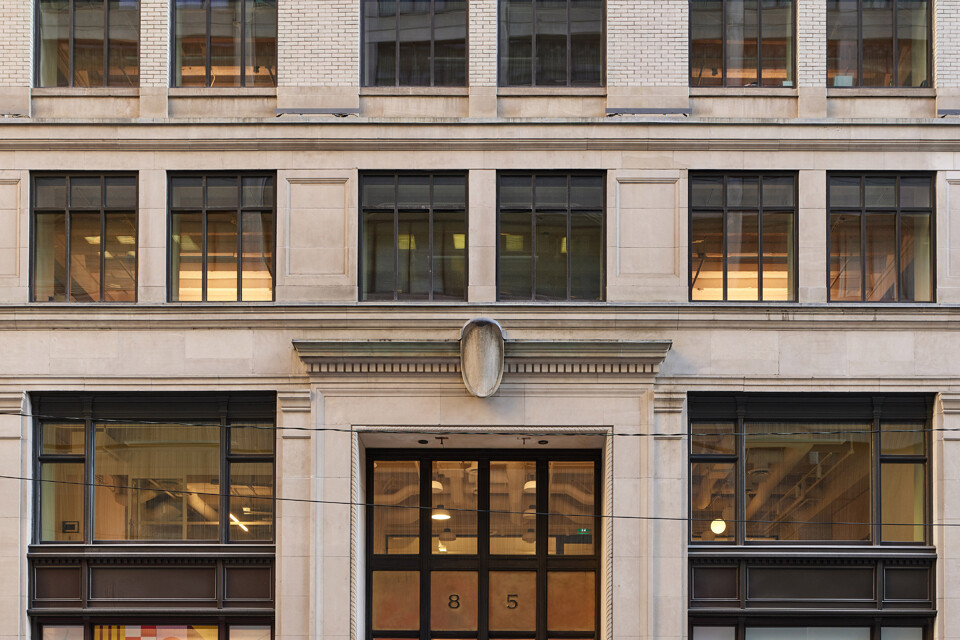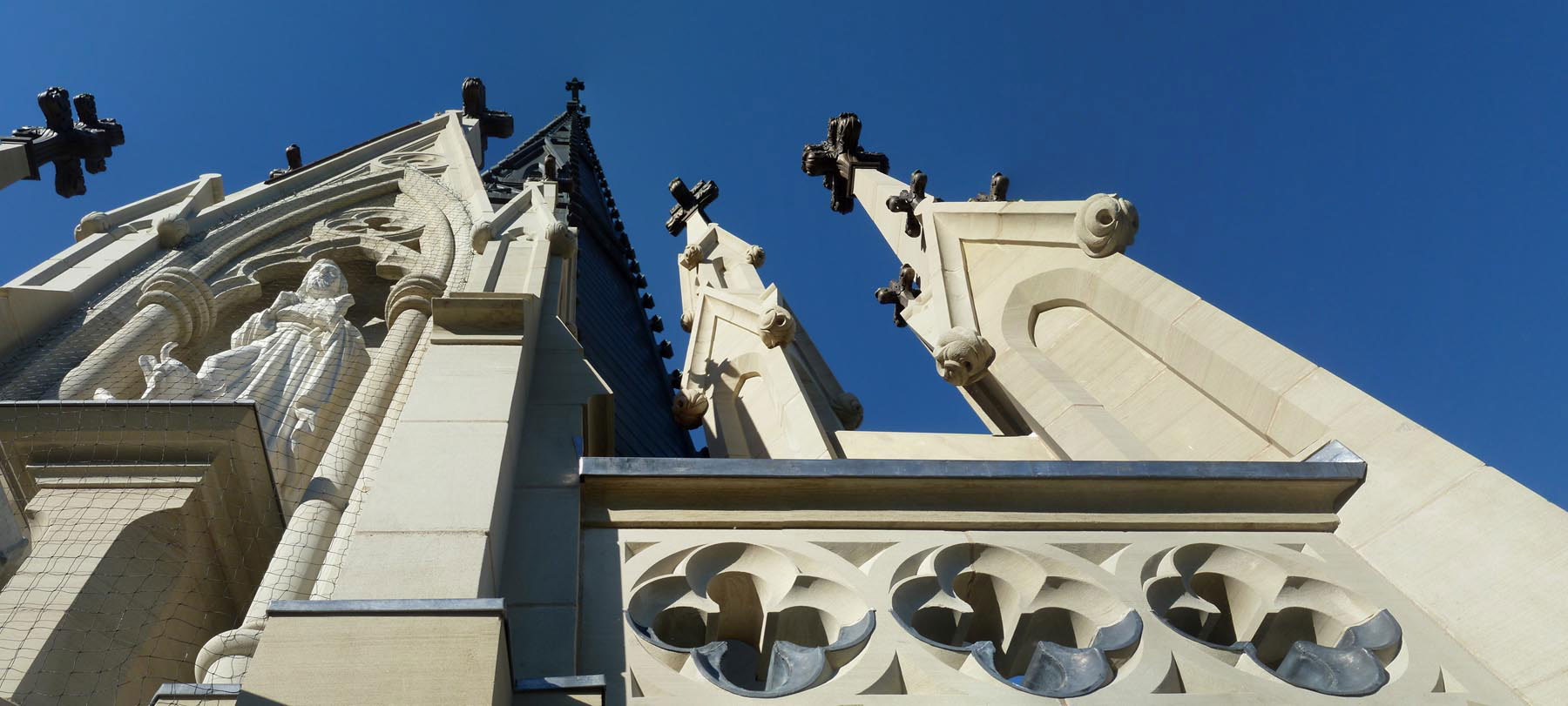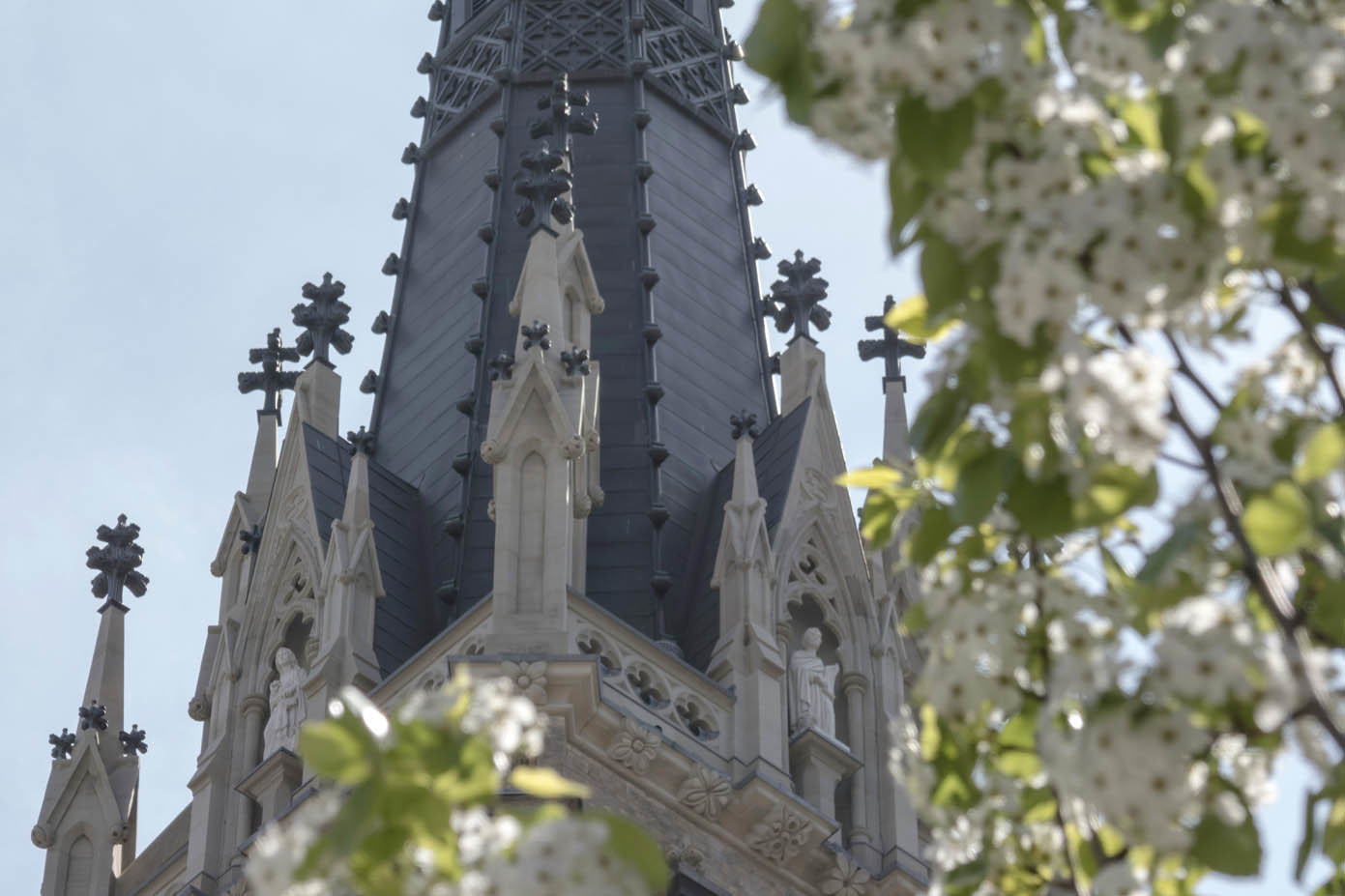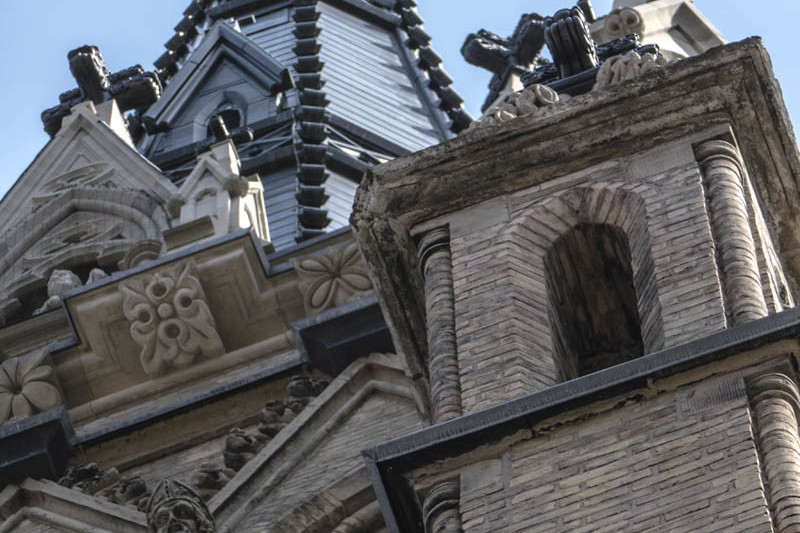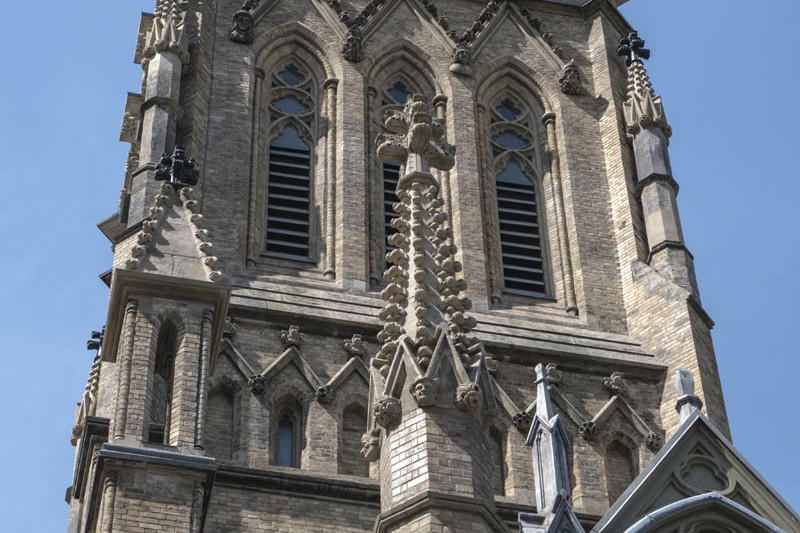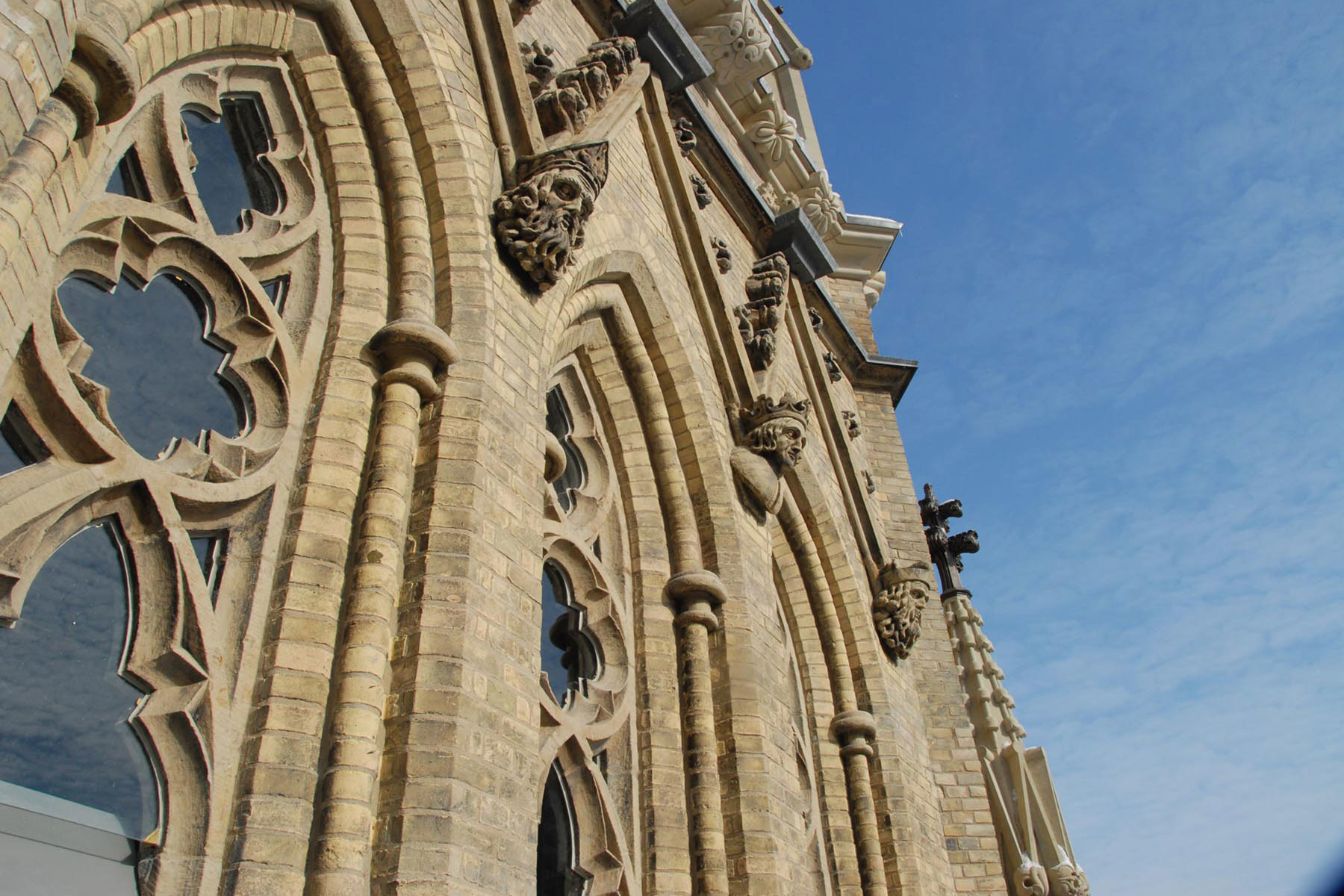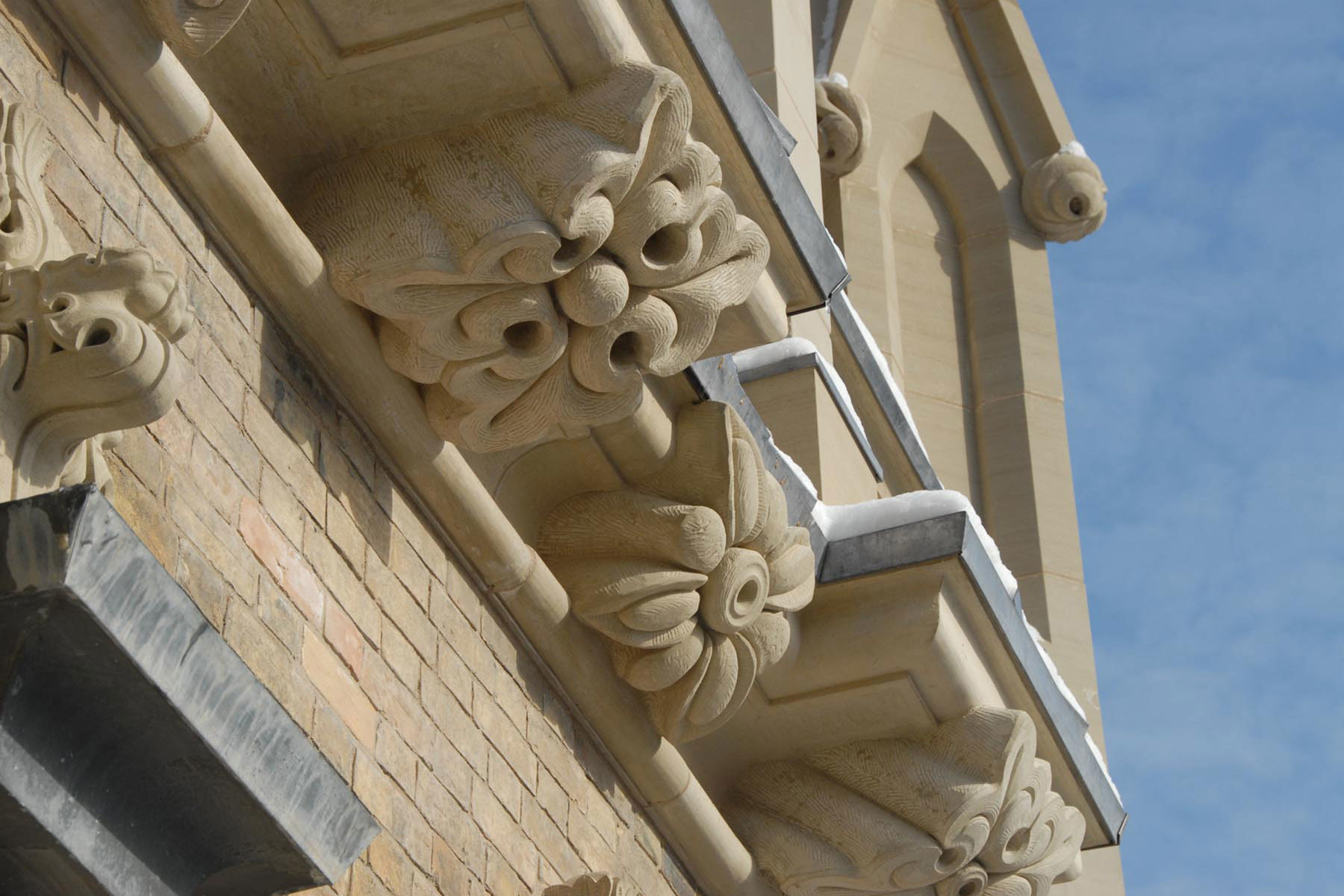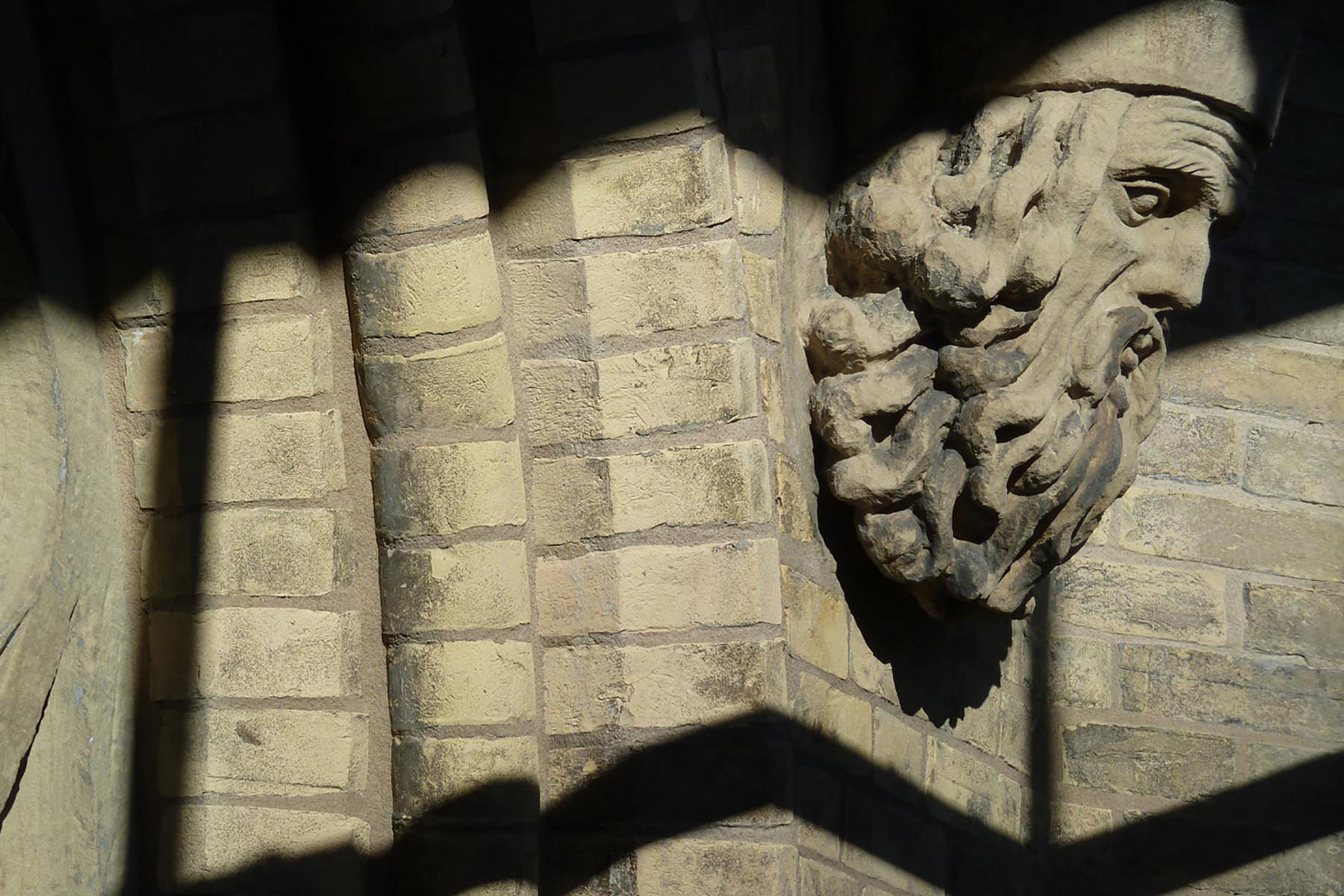Goodes Hall, Smith School of Business, Queen's University
+VG was retained to design a major renovation and significant addition to the historically significant Victoria School, a Richardsonian Romanesque schoolhouse constructed in the late 1800’s.
The program was for adaptive re-use and an extensive addition to house the Smith School of Business – an innovative education facility for the 21st Century. +VG was commissioned to undertake the work as Prime Consultant. Phase I of the project integrated the 4,000 m2 Victoria School and a 6,500 m2 addition as the new consolidated home for the School.
The project introduced a new skylit atrium along the east side of the heritage building allowing the building’s east façade to be exposed within the new public space of the facility. Completely new mechanical systems were introduced and included the use of spare heating/cooling capacity from an adjacent campus building to serve the building’s needs. The new facility included seven tiered lecture halls, and two classrooms, student break-out rooms, PhD and MSC program space, faculty offices, a computer lab, a video conference facility, and administrative space. The project was successfully completed on time and on budget, and won three awards of excellence.
Phase II was completed in September 2014, which includes a west addition that creates a large forecourt at the interface of the University and the school itself. A glazed interior gathering public space, “the Commons”, overlooks the forecourt. The intent is to engage the school with the larger university constituency. Phase II also included two tiered 80 seat lecture rooms, a flexible classroom for 80 that can open up to the Commons for special events, additional program spaces, faculty offices, and underground parking for 90 cars. Although Phase II was designed to achieve LEED Silver certification, the project was awarded LEED NC Gold certification.
LOCATION
Kingston, Ontario
COMPLETED
2014 (Phase II); 2002 (Phase I)
SIZE
100,000 ft² (PII); 110,000 ft² (PI)
SERVICES
Renovation & Addition
AWARDS
2008 Liveable City Award
City of Kingston
2003 Architectural Excellence Award (Honourable Mention)
Ontario Association of Architects (OAA)
2002 Award of Excellence
Frontenac County Heritage Foundation
Smith School of Business Executive Education Suite, Queen's University
This project is an interior conversion and fit-up of former office space on the 30th floor of a downtown high-rise, located on Front Street West in Toronto.
The design takes advantage of spectacular views over Lake Ontario. Finishes were consistent with a corporate feel appropriate for the Queen’s University Smith School of Business image. Work was completed to a high standard of quality on a very compressed schedule that utilized a Construction Manager and sequential tendering to allow work to begin prior to completion of all aspects of the design.
- The initial phase involved fit-up of approx. 7,000 ft² and included:
- An 80 seat tiered classroom, fully wired for “state of the art” audio/visual teaching technologies, which is convertible to a reception area and event space
- Three video conference rooms
- Five meeting rooms
- Administrative office space
- Reception area and refreshment/staging kitchen
The second phase included expansion of the suite to add:
- A 30 seat classroom
- Boardroom
- Three meeting rooms
- Student study space
- Event kitchen
The third and final phase entails fit-up of the balance of the 30th floor comprising of 25,000 ft². The phase three program includes:
- A second 80 seat tiered classroom
- An additional video conference room
- A relocated and expanded office area
- Various staff and student meeting rooms
- A large flexible ‘crush space’ for student study and receptions
- Supplementary washroom facilities
- A new ‘stand alone’ HVAC system serving the 30th floor
LOCATION
Toronto, Ontario
COMPLETED
2017
SIZE
25,000 ft²
SERVICES
Tenant Fit-Up/Interior Renovation
Doherty-Fitzpatrick Heritage House
The Doherty-Fitzpatrick Heritage House was constructed between 1851 and 1861.
It is an excellent example of a Neo-Classical farmhouse, featuring detailing and craftsmanship of a high order with a symmetrical front façade and fenestration with distinctive “Flemish Bond” brick patterning, decorative frieze, eave returns, and gable trim, a central entrance featuring transom and sidelights with elegant tracery, and a centre hall plan.
+VG Architects was retained in 2019 by the City of Brampton to provide a feasibility study and cost estimate for the conversion of the heritage house to an Early-ON Child and Family Centre, and to provide architectural services through construction contract administration. The project includes a 500 ft2 addition at the rear that is designed to be distinct and subordinate to the original heritage building. Interior renovations include upgrading the structure, accessibility, mechanical, electrical fire and life safety systems to accommodate the change of use from Residential to Assembly occupancy. The project construction cost is below the budget. The Doherty-Fitzpatrick Heritage House was vacant for more than 10 years before this project.
LOCATION
Brampton, Ontario
COMPLETED
2021
SIZE
14,980 ft² (including 500 ft² new addition)
SERVICES
Feasibility Study
Adaptive Re-Use
Accessibility Improvements
Oakville Museum Coach House
The official opening of the picturesque, Shingle Style Oakville Coach House in 2022 marked the completion by +VG Architects of the adaptive reuse of the Erchless Estate, a cultural heritage property designated under Part IV of the Ontario Heritage Act as an intact surviving example of an estate developed by a wealthy settler family.
This ensemble of historic buildings on an elevated natural embankment overlooking Lake Ontario, the mouth of Oakville Harbour, and Sixteen Mile Creek, comprises the Custom House (1856); the Italianate-style residence (1858), former home of several generations of the town’s founding Chisholm family and restored as the Oakville Museum by +VG in 1991; the post office (1835); and the Coach House (1901).
The 5,150 ft2 Coach House, the most elegant building on the site, was designed by the Toronto-based architectural firm Dick and Wickson around 1899. The building is in three-parts: horse stables and tack area, coach storage and hayloft; a two-storey gardener’s cottage; and a linking storage area. The exterior charms the eye with eclectic features such as the steeply pitched cross-gable roof and its irregular slopes, eyebrow dormers, bell-cast and bowed projections, shingled cupola, and bay window and mullioned windows.
The project mandate was to:
- Create a multi-purpose public venue and restore the gardener’s cottage;
- Strengthen links and enhance visual access to the Coach House;
- Enhance the indoor and outdoor connection and presence of the Coach House in the Oakville Museum campus;
- Harmonize the landscape design with the larger Erchless campus and broader park, river, lake and road settings;
- Integrate path systems, wayfinding and visual accessibility from within and outside the museum campus;
- Protect the archeological and cultural heritage significance of the Coach House and surrounding grounds;
- Change the building’s use from storage to assembly occupancy.
Bringing the building up to current accessibility standards necessitated interior renovations such as door and washroom access improvements.
LOCATION
Oakville, Ontario
COMPLETED
2022
SIZE
5,100 ft²
SERVICES
Adaptive Re-Use
David Dunlap Observatory & Administration Building
The David Dunlap Observatory (DDO), one of Richmond Hill’s most iconic buildings and the largest telescope in Canada, was recently restored and revitalized by +VG to better serve the many patrons that visit these buildings every year.
The Observatory and the Administration Building were constructed circa 1935 and were owned and operated by the University of Toronto until 2008. Work included a Building Condition Assessment and restoration of the exteriors of both the Observatory and the Administration Building.
Upon completion of the revitalization of these buildings, the DDO had many important heritage elements restored to continue to provide public education and outreach, and play a key part in the transformation of the park into a major destination that will serve the residents of Richmond Hill and attract visitors from across the GTA. The goal of the project was to shape the way people experience David Dunlap Observatory Park, preserve a proud part of Canada’s astronomical research heritage, and to make this star of the City shine bright once again.
DESIGNATED
LOCATION
Richmond Hill, Ontario
COMPLETED
2021
SIZE
21,000 ft²
SERVICES
Building Condition Assessment & Renovation
AWARDS
2022 Award of Excellence, Conservation – Materials, Craftsmanship & Construction
Canadian Association of Heritage Professionals (CAHP)
Ontario Court of Justice Toronto
The New Toronto Courthouse is a 17-storey tower courthouse that, when completed, will be the largest courthouse in Ontario. The project site has a rich history dating back to the 1840’s, with the last pre-existing building on the site having been demolished in the 1980’s. At that time heritage foundations and other elements were encapsulated under a parking lot.
In 2016, Infrastructure Ontario (IO) began an extensive Archaeological excavation of the site leading to the discovery of thousands of historical artifacts and the mapping of the lost footprints of many former buildings and structures, and the publication of two books. EllisDon retained +VG to navigate the complex approvals process with Infrastructure Ontario, the Ministry of the Attorney General (MAG), and the City of Toronto and to provide community consultation related to the heritage interpretation. +VG led consultations with:
- The Heritage Interpretation Working Group set up by the City of Toronto,
- The MAG Indigenous Elders’ Council, and
- Separate Indigenous consultation meetings with Six Nations, Huron-Wendat, and Mississaugas of the New Credit First Nation.
+VG’s challenge as the heritage architect was to provide heritage commemoration and interpretation on a site where all heritage material had been removed by the archaeological investigations or by the excavations for the courthouse. A multi-faceted heritage interpretation strategy was developed to engage the public as they approach the site and continuing through into the interior of the courthouse in the large glazed public atrium. The broad on-site Heritage Interpretation Strategy Included:
- Site hoarding with heritage interpretation and graphic displays
- Bronze inlay markers and plaques cast into the sidewalks and plaza spaces surrounding the courthouse
- Three large stainless steel interpretation signage panels in the exterior plaza
- Marker date stone and interpretative panel for the former British Methodist Episcopal Church (BME Church)
- Full scale graphic window display commemorating the façade of the BME Church at its original location
- Interior graphic explanatory panels
- Archaeological artifacts display case for rotating exhibits
- Digital information touch-screen kiosk
- Heritage wall display of historic photographs, maps, and artifacts
Extensive coordination for the Heritage Interpretation Strategy was provided by +VG with the design team: architectural, archaeological, graphic communications, landscape, and lighting. Deliverables included the Heritage Impact Assessment (HIA), Heritage Interpretation Design Plan (HIDP), and Site Plan Application approvals.
LOCATION
Toronto, Ontario
CLIENT
Infrastructure Ontario (IO)
COMPLETED
2022
SIZE
775,000 ft²
SERVICES
Heritage Consulting Services
PHOTOGRAPHY
David Ecclestone (+VG Architects)
PRESS
Renzo Piano stacks Toronto courthouse on top of massive atrium
Dezeen
T.O. courthouse integrates several facilities into one sustainable building
Construction Canada
New Courthouse in Toronto brings six courts under one roof
Canadian Architect
Excavation in Full Swing for Ontario Court of Justice
Urban Toronto
New Toronto courthouse will likely look different from others
Toronto Star
85 Richmond Street West
85 Richmond Street West c.1923 was originally lauded for its high-quality offices and cutting-edge construction technology.
By the new millennium, the building was in need of significant rehabilitation work. Planned in relation to the construction of the adjacent EY Tower, the revitalization of the building by Oxford Properties has created new prestigious energy-efficient office space that highlights the character-defining heritage features of the building. Upgrades to the building include the sensitive insertion of a distinct addition within the lightwell of the Chicago School U-shaped plan, improvements to the exterior building envelope for environmental sustainability and energy efficiency, modern mechanical and electrical systems, building automation, and streamlined PATH connection to an enlarged ground floor lobby opening to the plaza at the west.
The heritage conservation scope includes:
- Heritage Impact Assessment, Conservation Plan, and Heritage Interpretation Plan
- Reinstatement of the Beaux-Arts style cornice at the roof using pressed and soldered lead-coated copper (the original was removed in the early 1950’s)
- Reinstatement of original fenestration and spandrel details at the base to accentuate the historical proportional division of the façade
- Conservation and upgrades to the original wood windows at the second floor
- Masonry conservation of exterior white glazed brick and limestone principal heritage facades
- Reconstruction of rear masonry facades
- Decorative lead-coated copper belt courses and flashing
- Exterior heritage lighting
- Conservation of the heritage lobby and bronze entrance
LOCATION
Toronto, Ontario
COMPLETED
2017
SIZE
145,000 ft²
SERVICES
Heritage Consulting Services
PRESS
Stay or tear down? Calculating the redevelopment potential of buildings
Globe & Mail
Nine Projects Nominated in Built Heritage Category for the 2021 Heritage Toronto Awards
Urban Toronto
New Cornice is the Star of 85 Richmond West Restoration
Urban Toronto
Oxford Proposes WZMH/+VG-Led Reno of Heritage Office Tower
Urban Toronto
St. Michael's Cathedral Exterior Envelope & Tower
Between 2010 and 2017, as part of the Masterplan for the rehabilitation of St. Michael’s Cathedral, +VG Architects undertook a comprehensive, phased building envelope conservation project on the landmark 1847 Gothic Revival building.
All exterior building elements and systems were addressed, including traditional slate roofing, brick and sandstone masonry, metalwork and wood windows and structural elements. Beginning in 2010 with the West Facade and Tower, the work continued around the exterior over the next 6 years. Initial surveying, testing and analysis was done to assess and define the scope of Conservation work required. Further and more extensive investigative work was done from scaffolding, before decisions were made on a case by case basis for the appropriate conservation and repair methodology for each building element. Detailed conservation work such as fine cleaning, consolidation, and detailed repairs to maintain and stabilize the intricate carved sandstone were carried out on all of the many decorative stone features.
Structural stabilization of the original wood structural members, and of high-level masonry elements such as Gothic pinnacles, Stone Crosses and Carved Cornice stones was required. Where appropriate, restoration of lost detail was carried out- for example at the Upper Tower where conditions were extremely deteriorated and major interventions were required to stabilize and make safe the masonry; and, on the roofing where a version of the original slate roofing pattern, previously removed- was restored on the replacement roof.
The ability to react to unforeseen conditions, and to work closely with Conservators, Structural Engineers and Tradespeople were essential to ensure that the needs of the Client were met, and the historic fabric of the building is preserved and maintained for future generations. The work has been carried out to the highest of international conservation standards, with the aim being to always meet or exceeded the Parks Canada Guidelines for the Repair of Historic Places in every aspect. The Work has received recognition with Heritage Toronto awards in 2013 and 2017, as well as having been shortlisted for the Best International project at the Brick Awards in London, England in 2013.
LOCATION
Toronto, Ontario
COMPLETED
2017
SIZE
22,400 ft²
SERVICES
Master Planning & Conservation
AWARDS
2019 Ecclesiastical Insurance Cornerstone Award
National Trust for Canada
2017 Craftsmanship & Conservation Award
(Nave & East Chancel Window)
Heritage Toronto
2013 Craftsmanship Award (Honourable Mention)
(West Façade & Tower Conservation)
Heritage Toronto
2007 Craftsmanship Award
Canadian Association of Heritage Professionals (CAHP)

